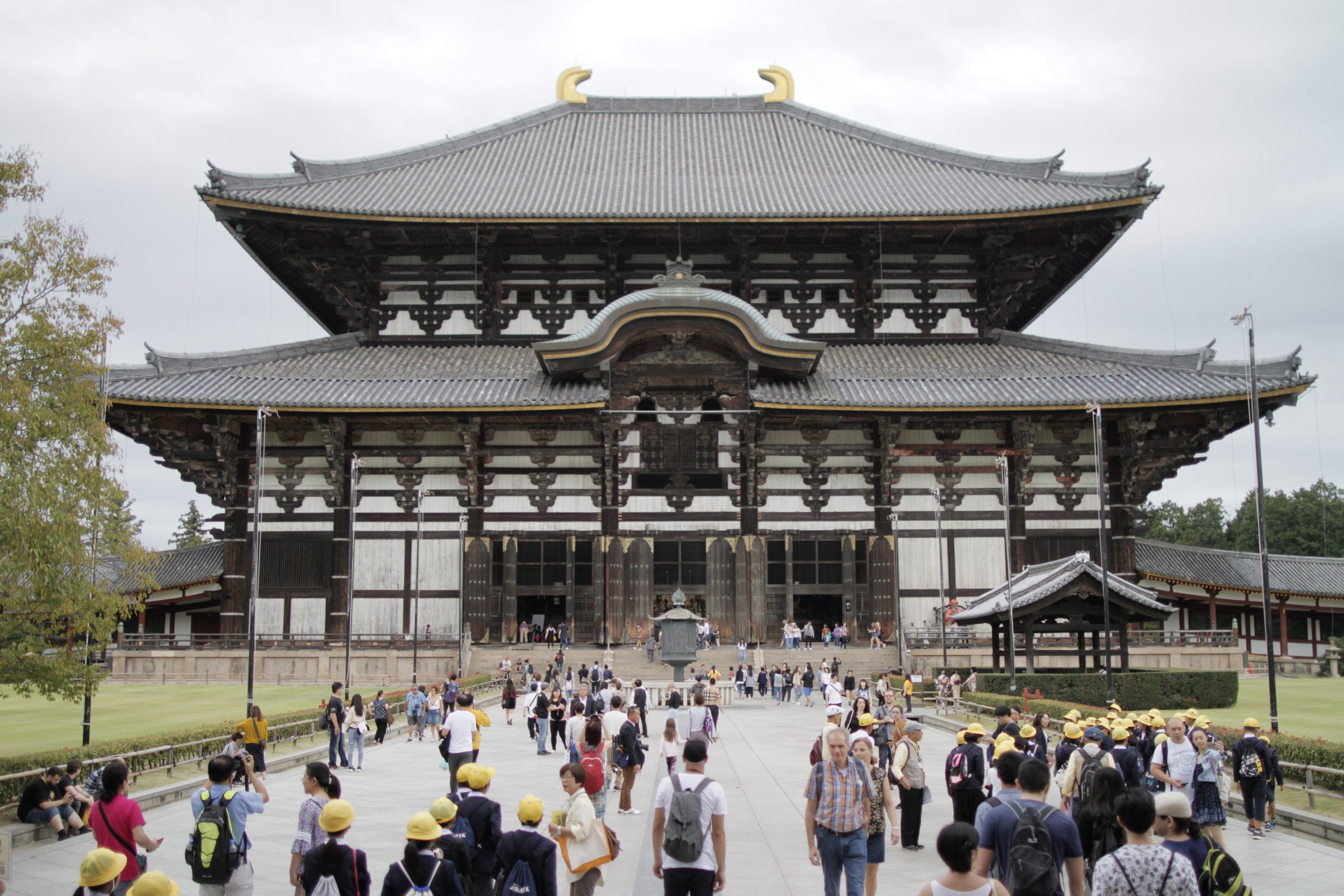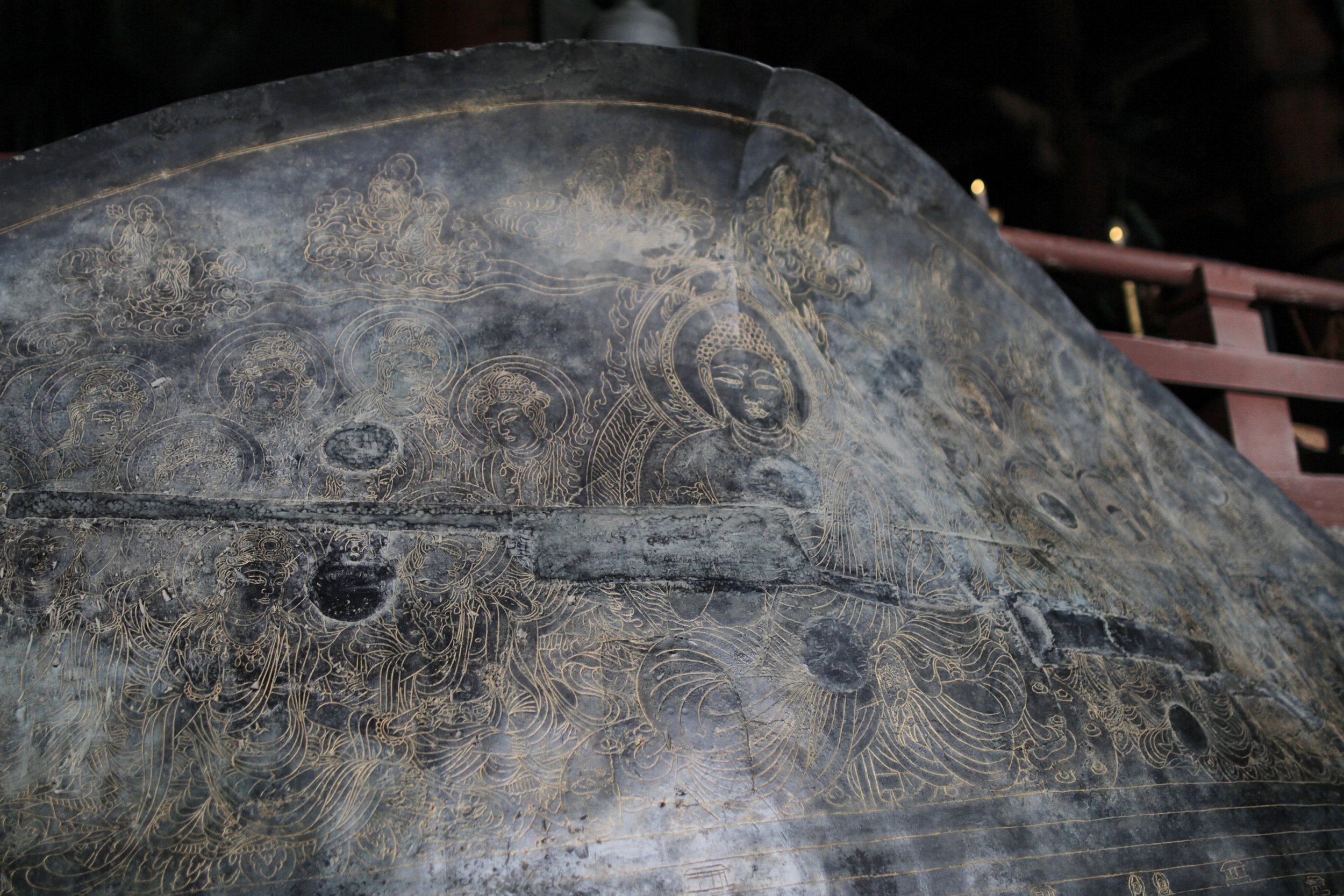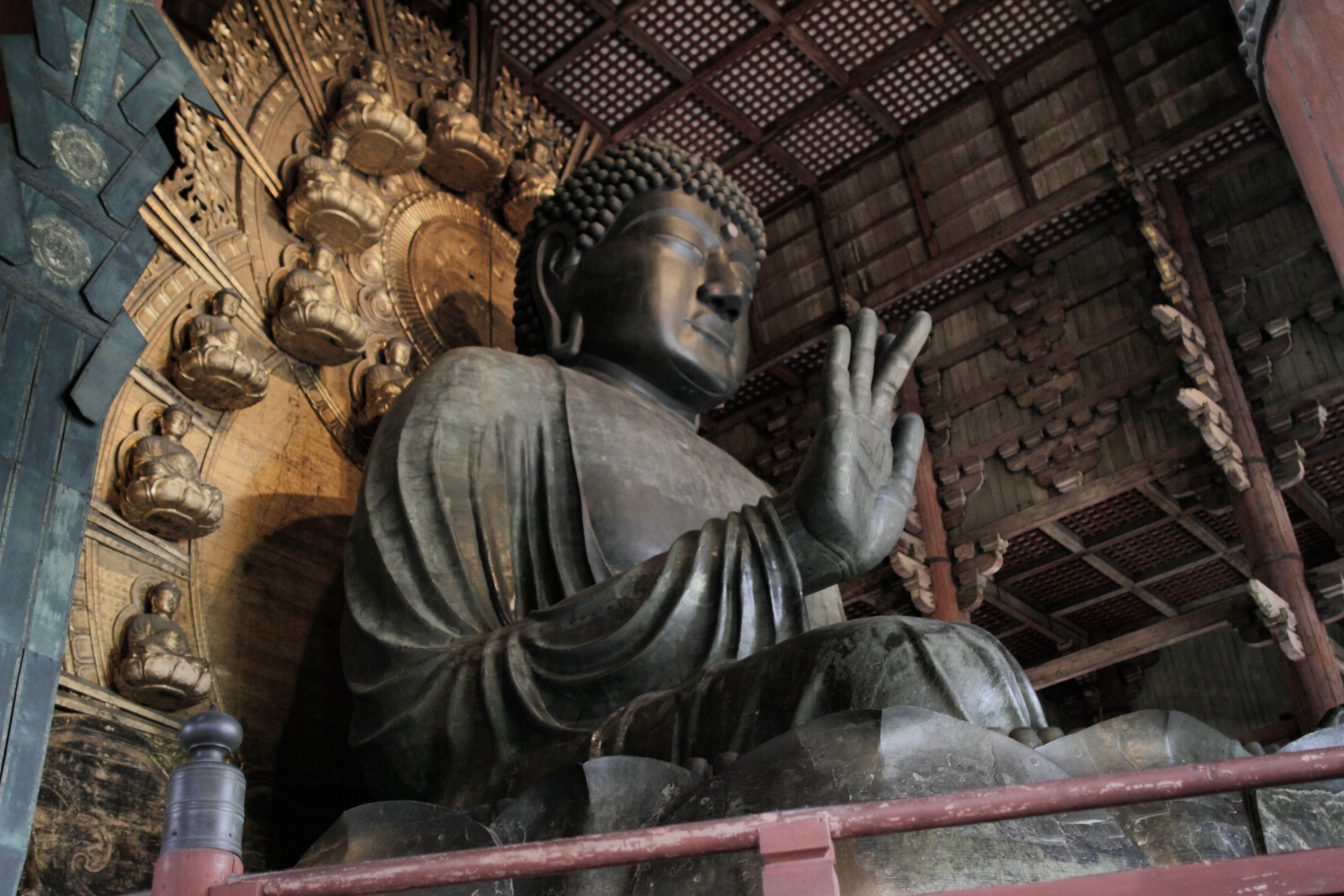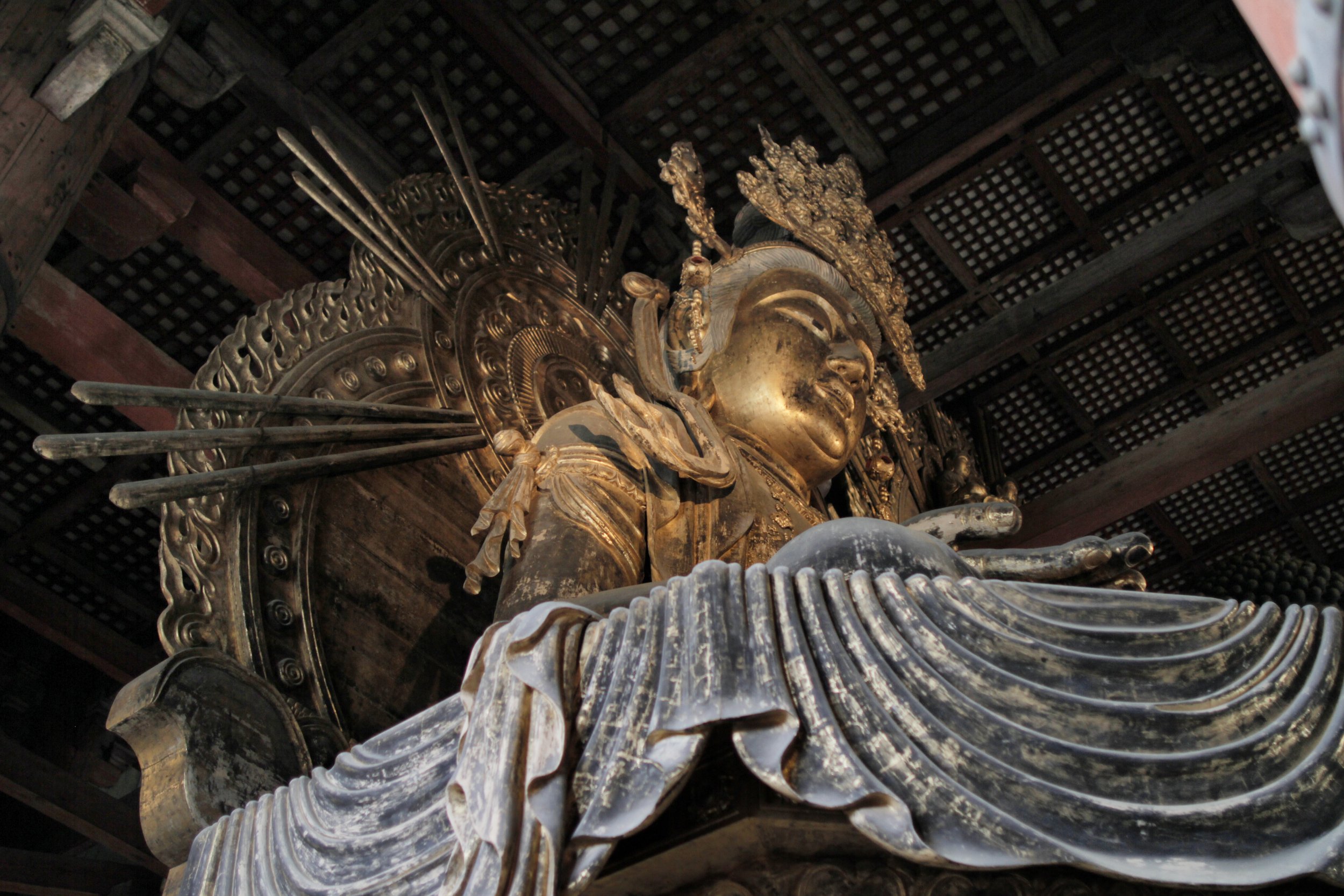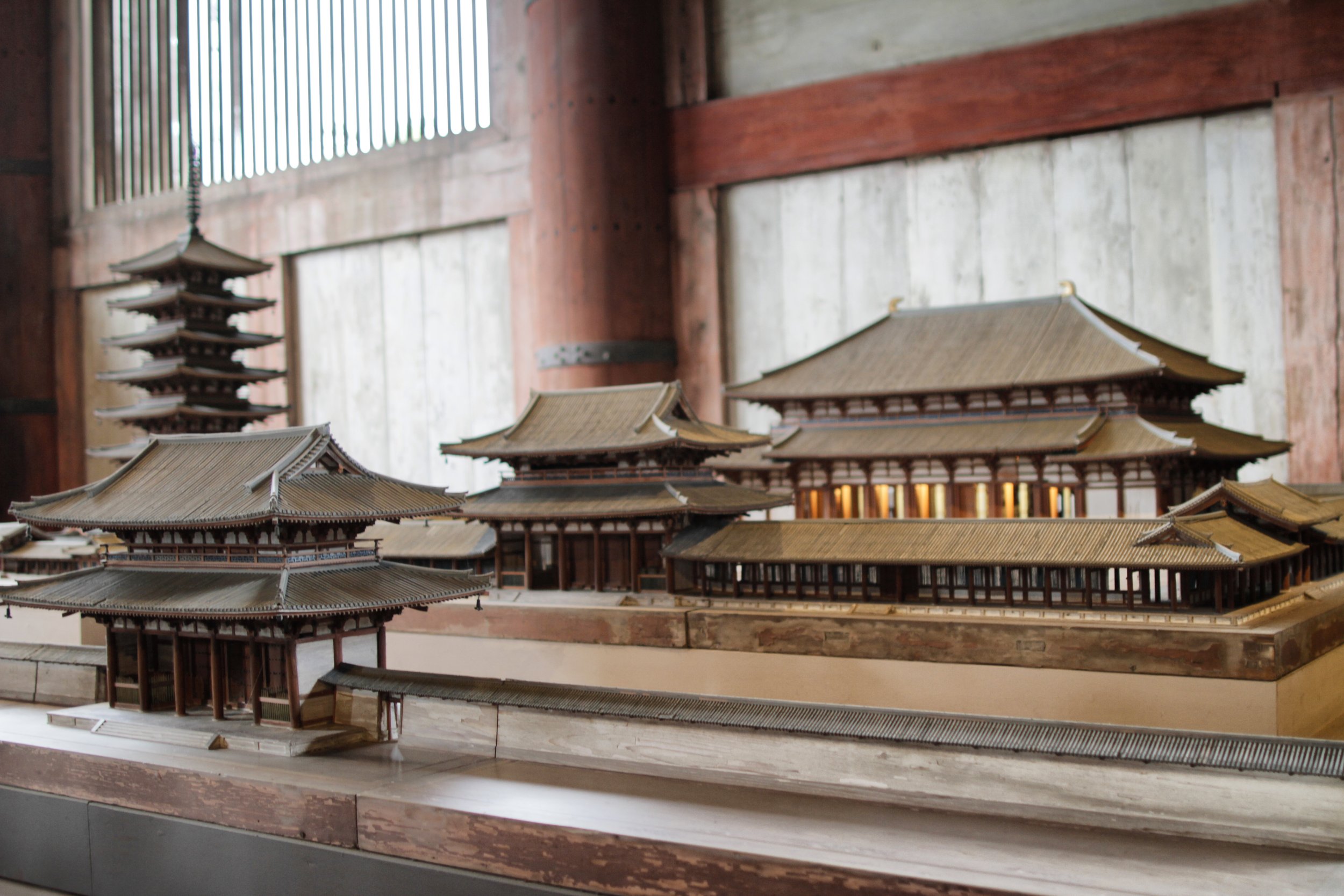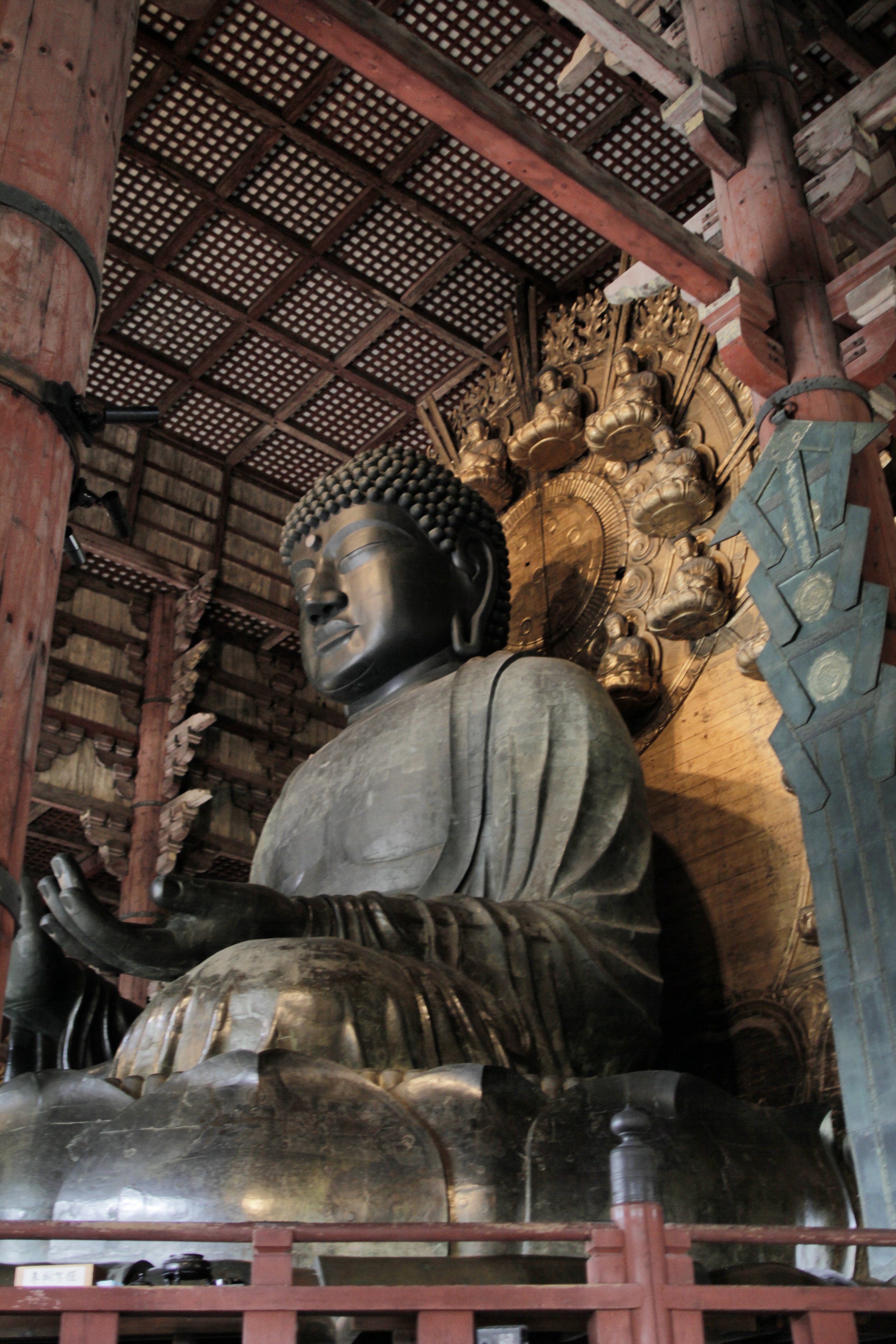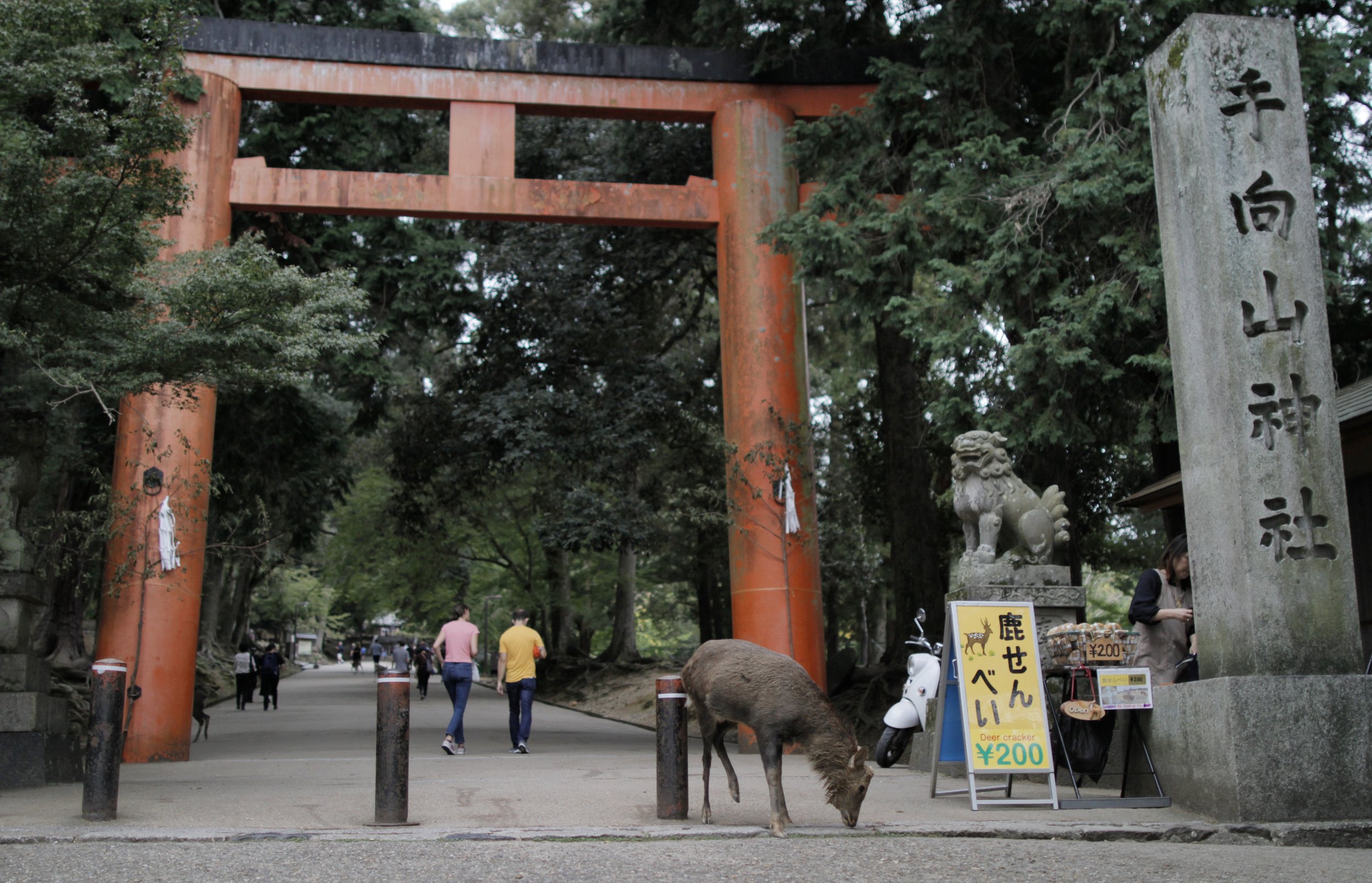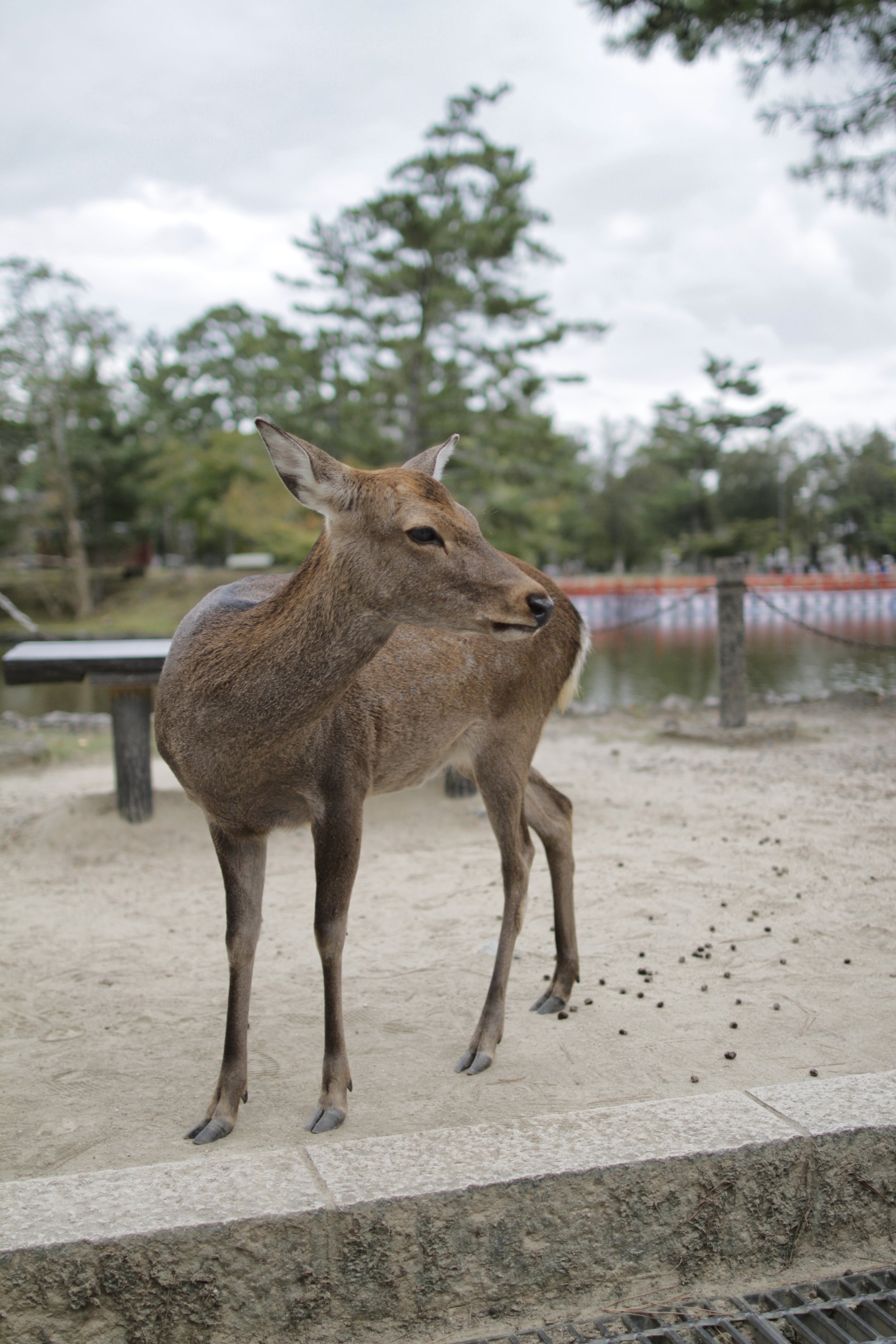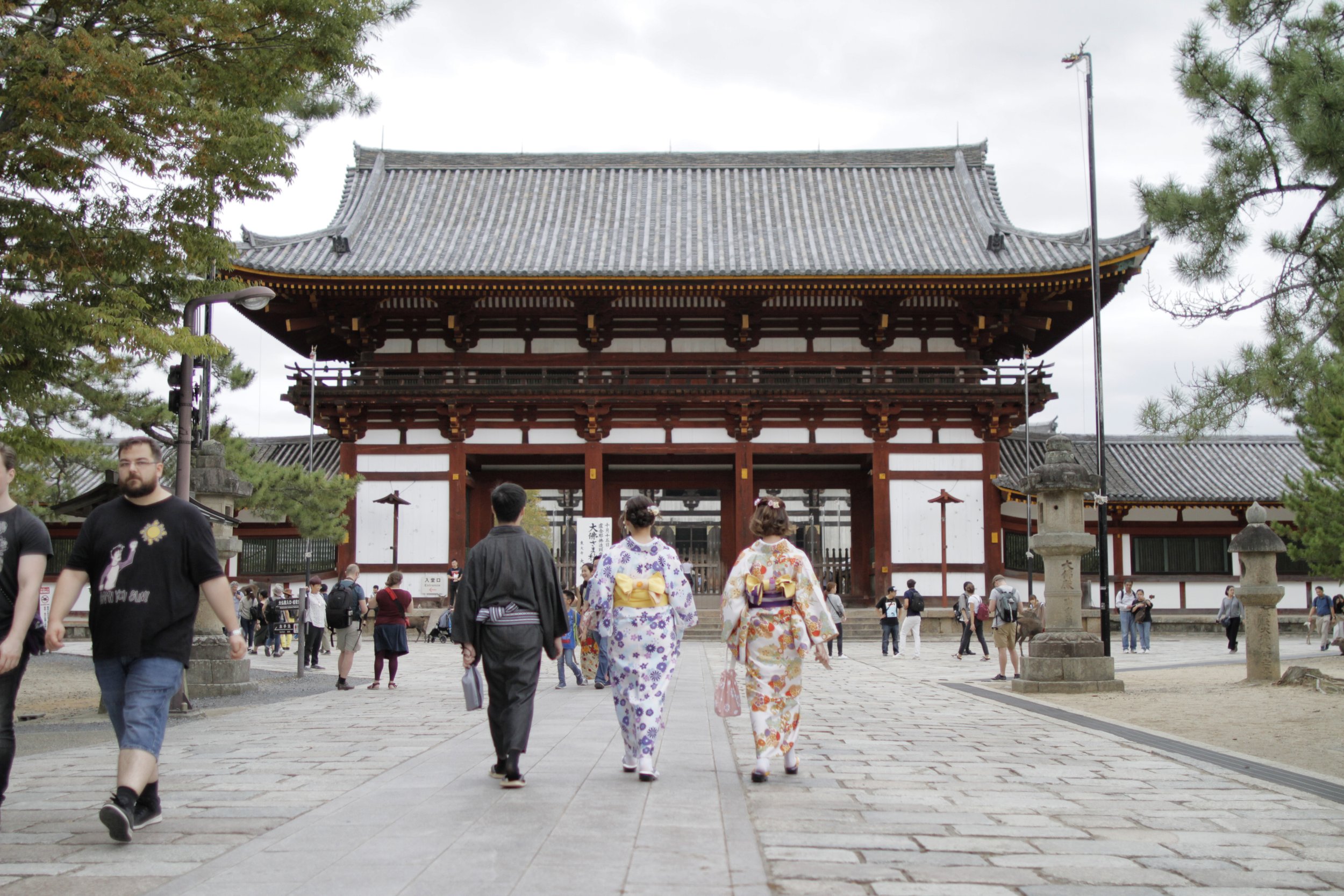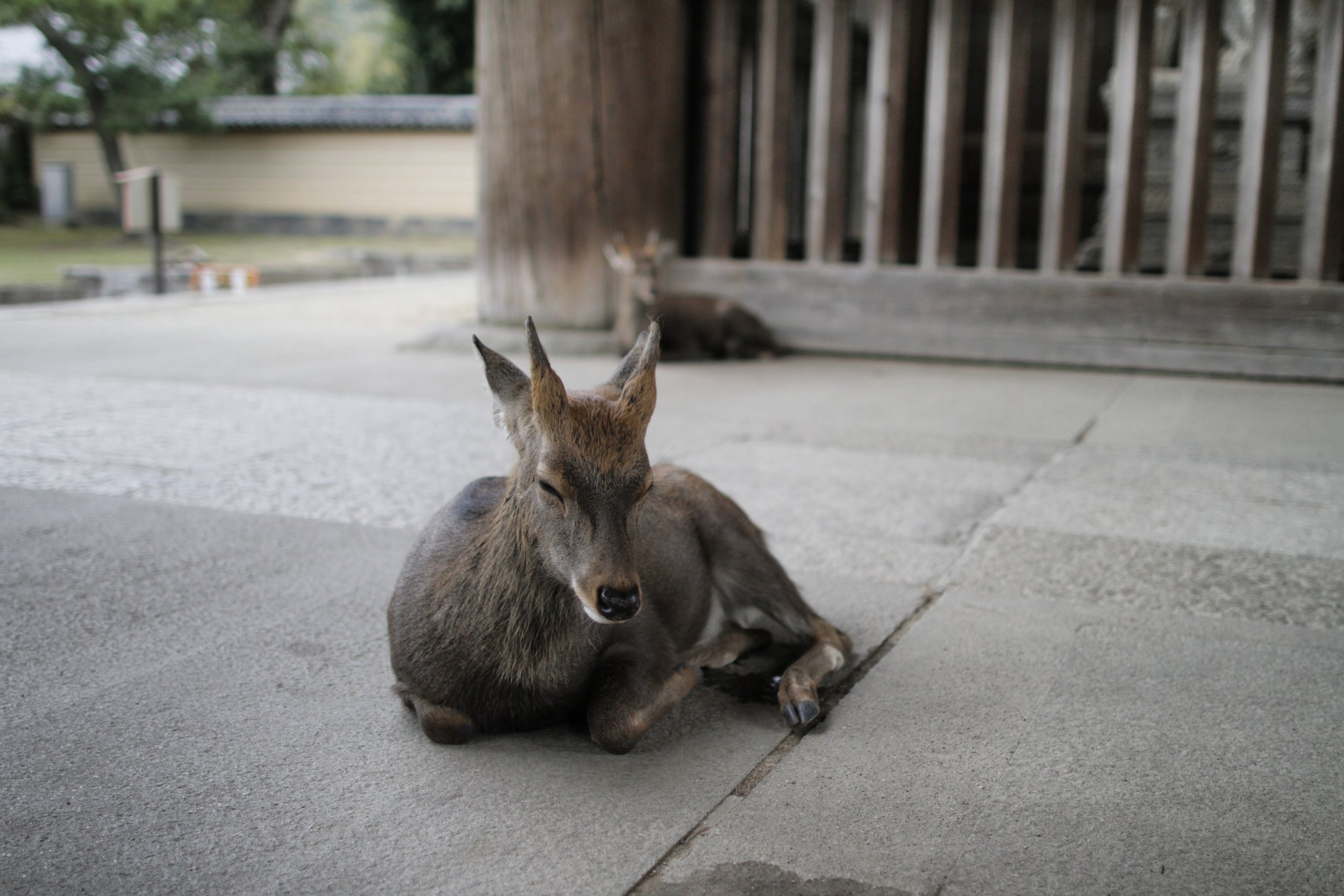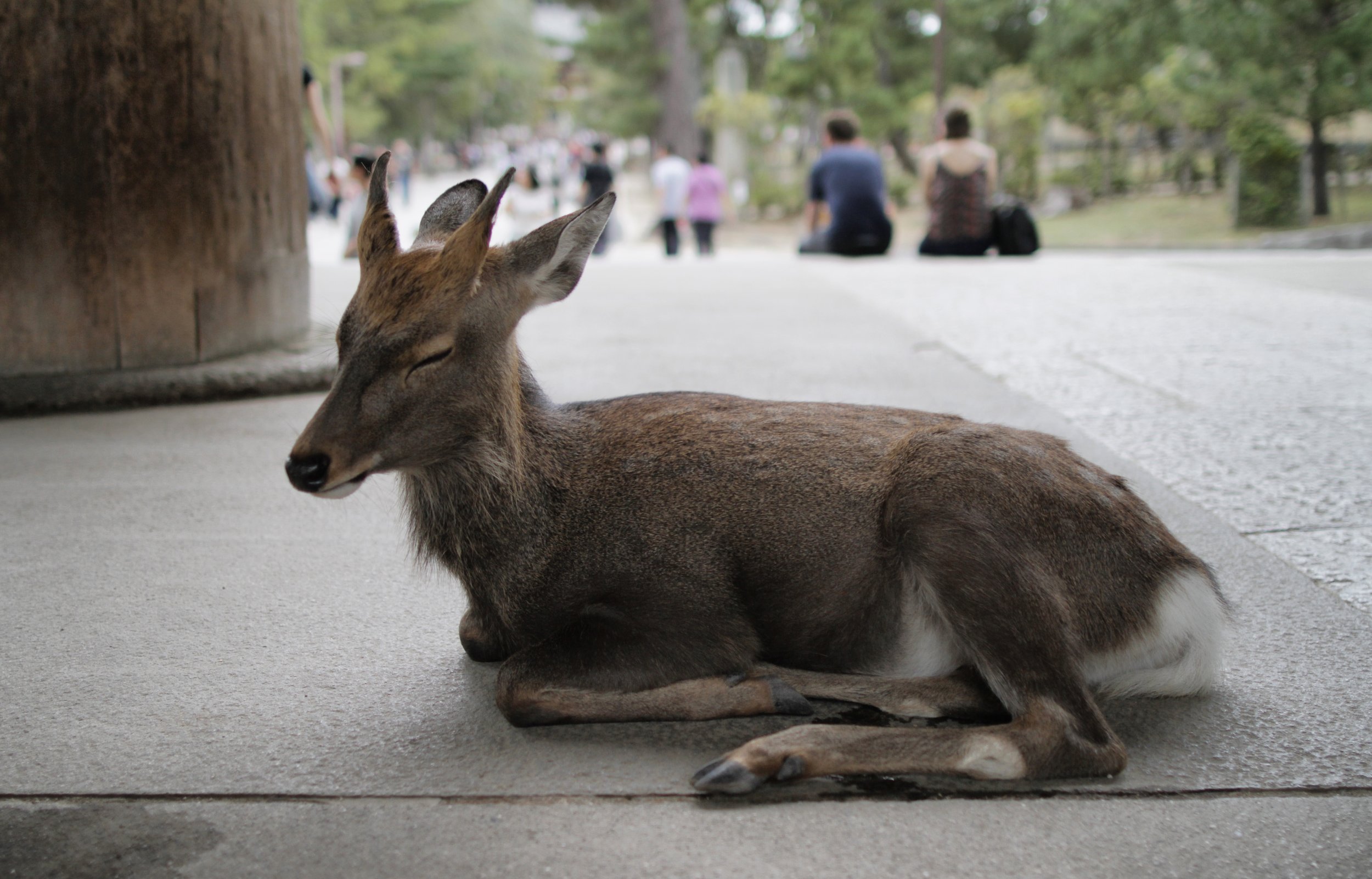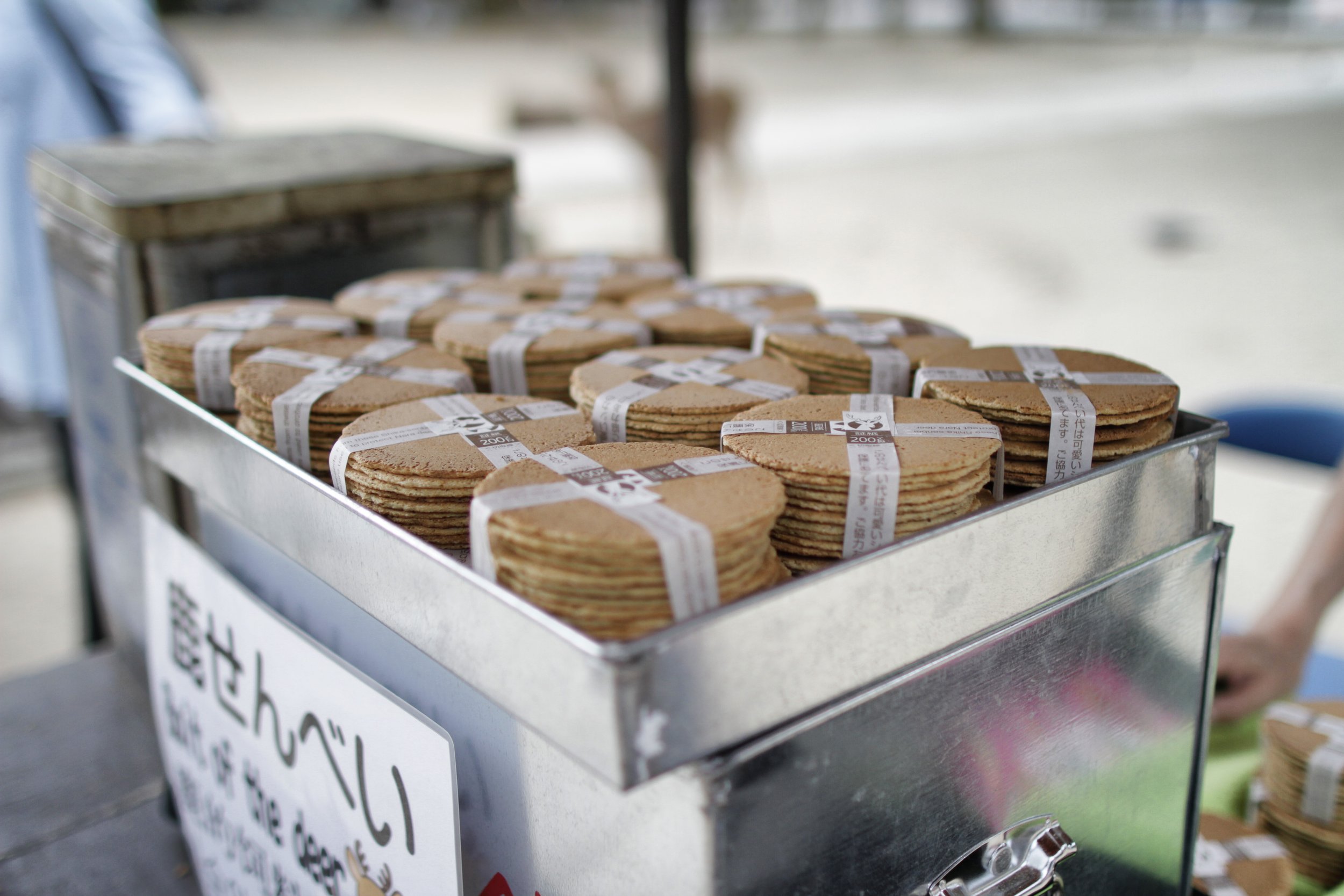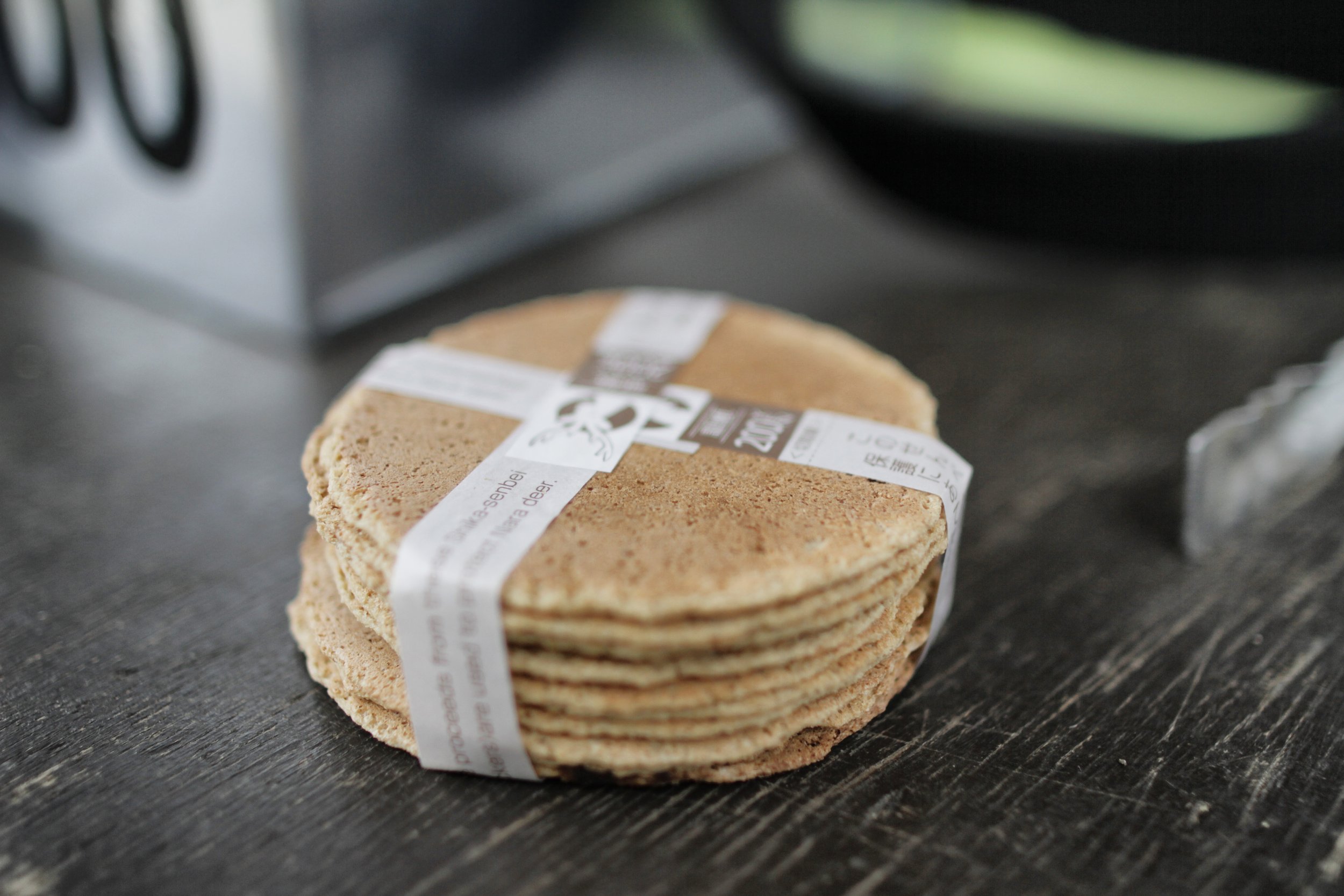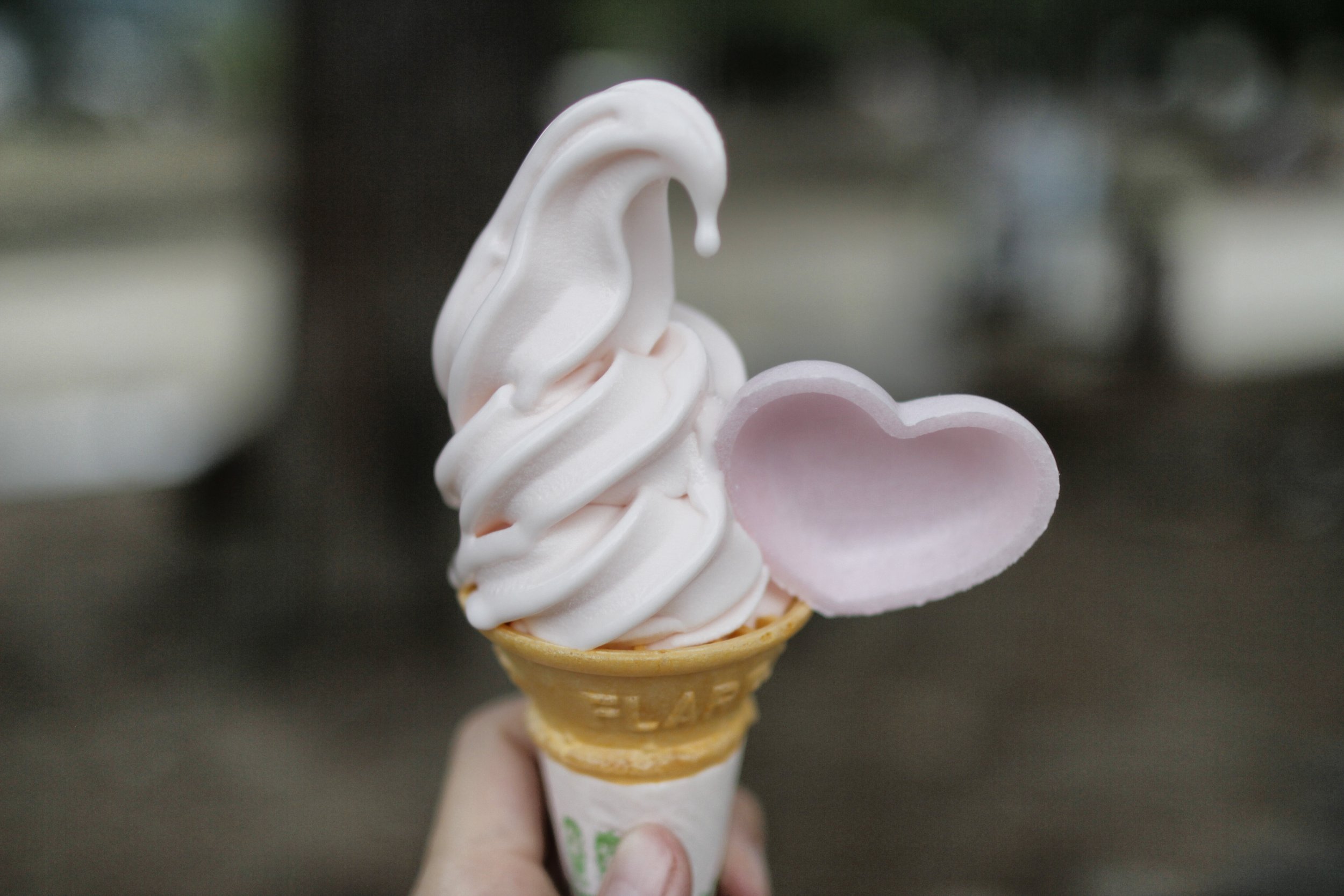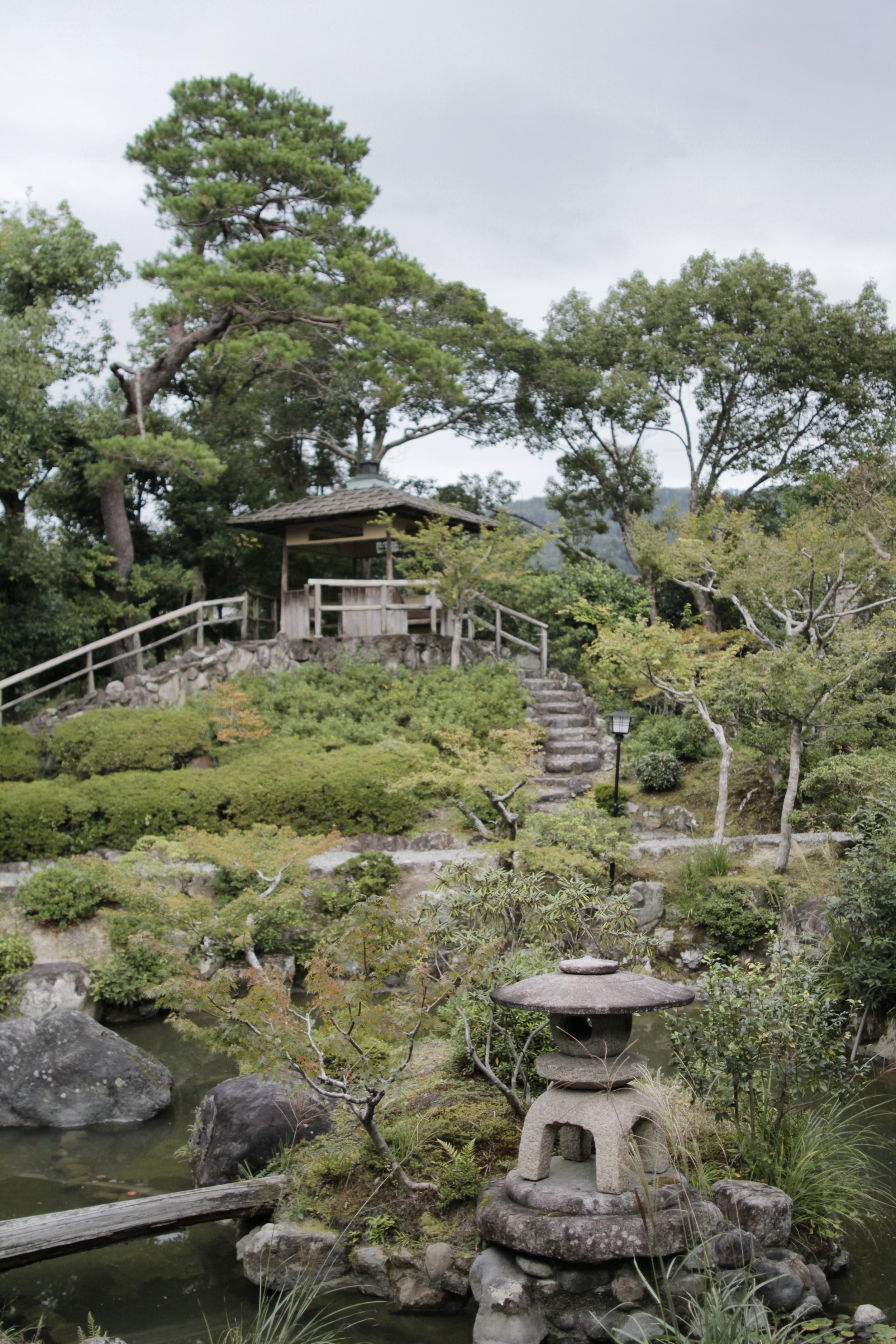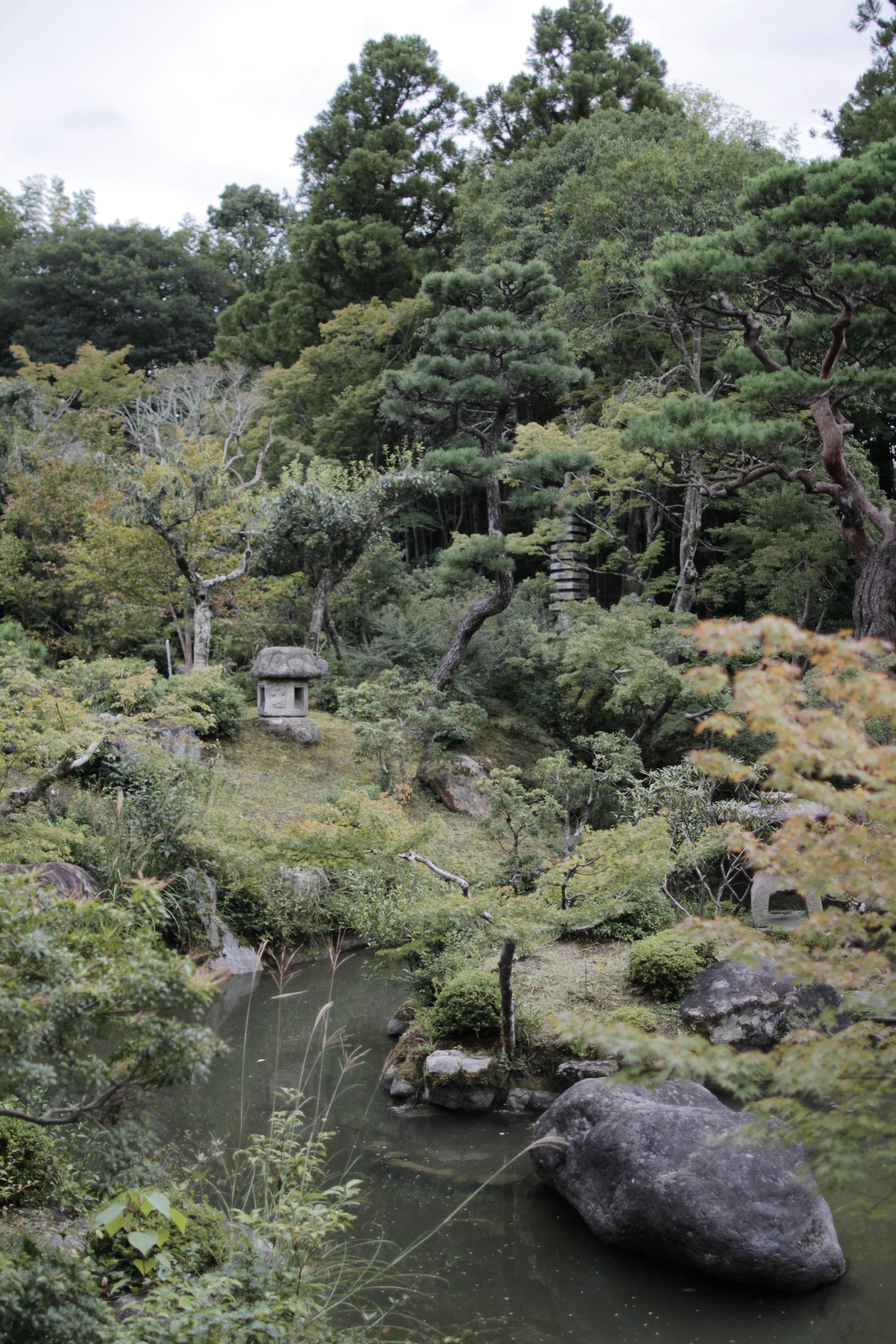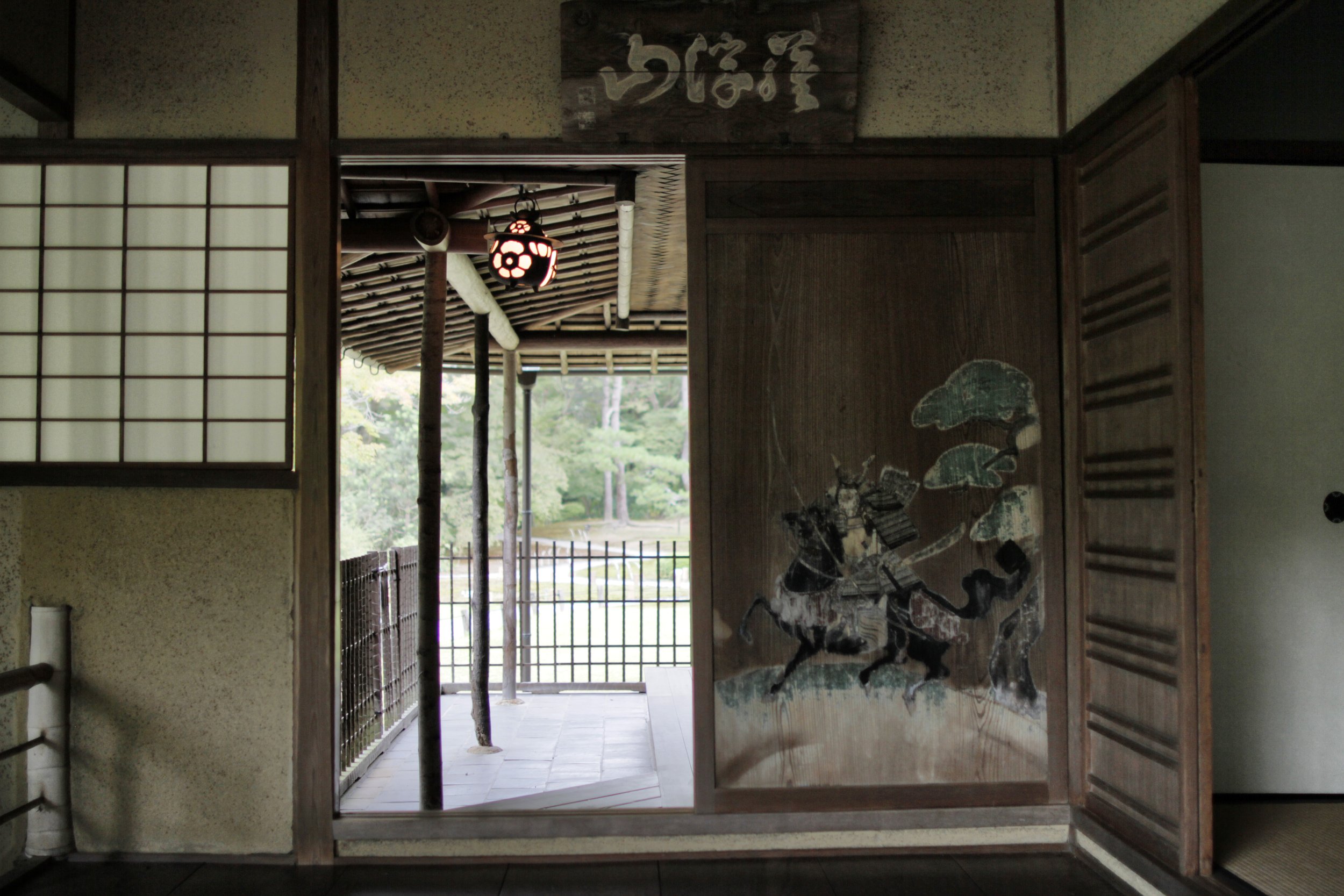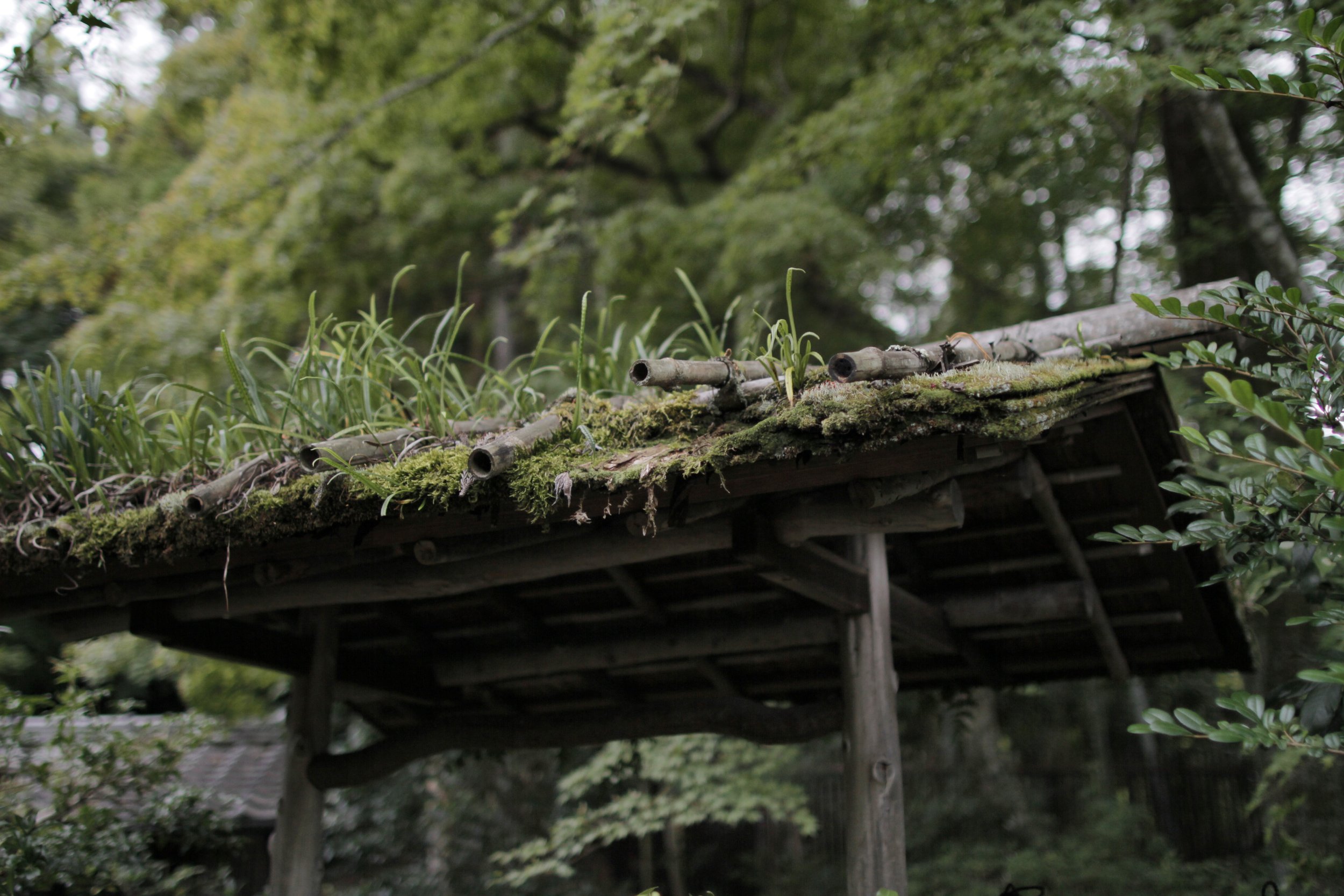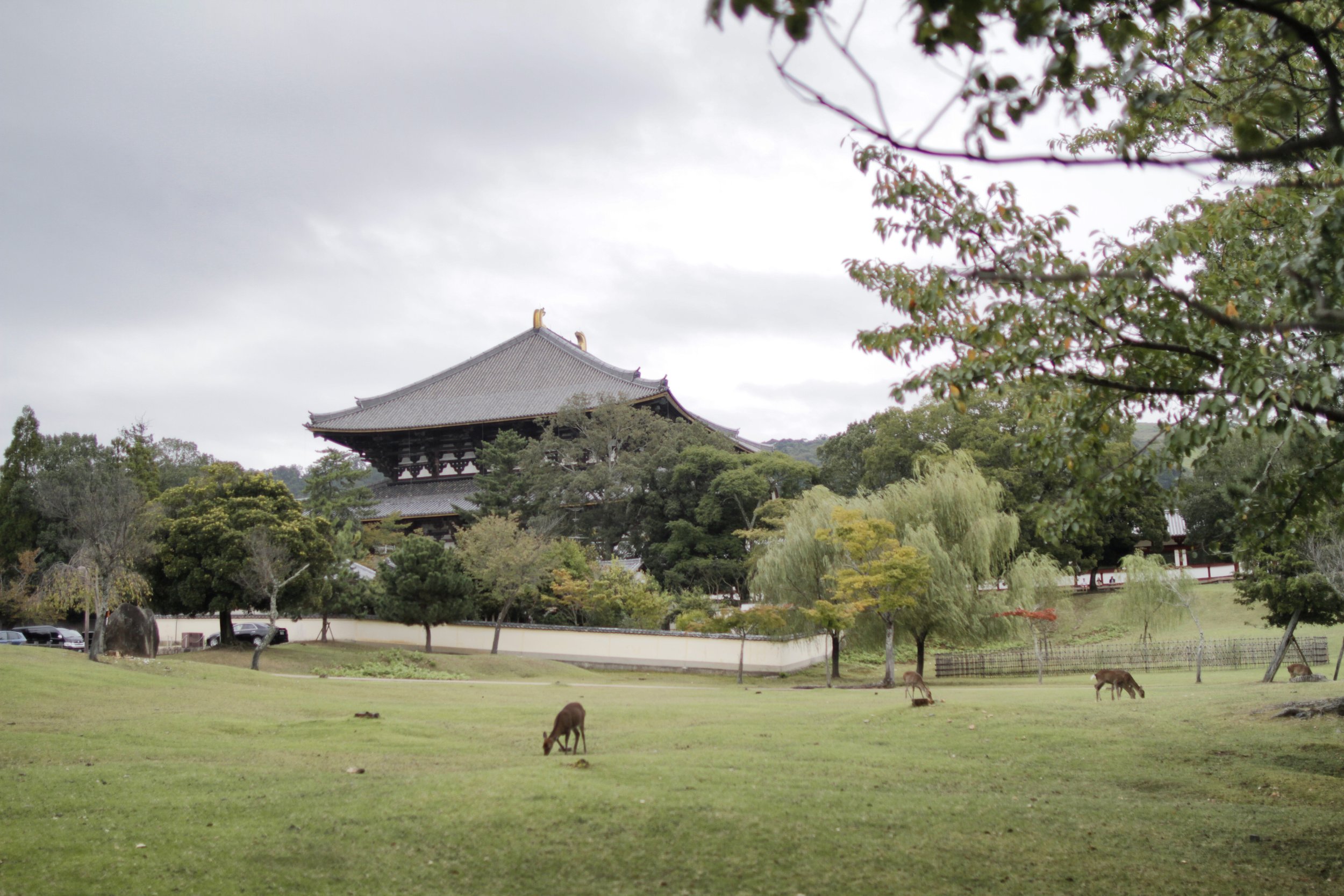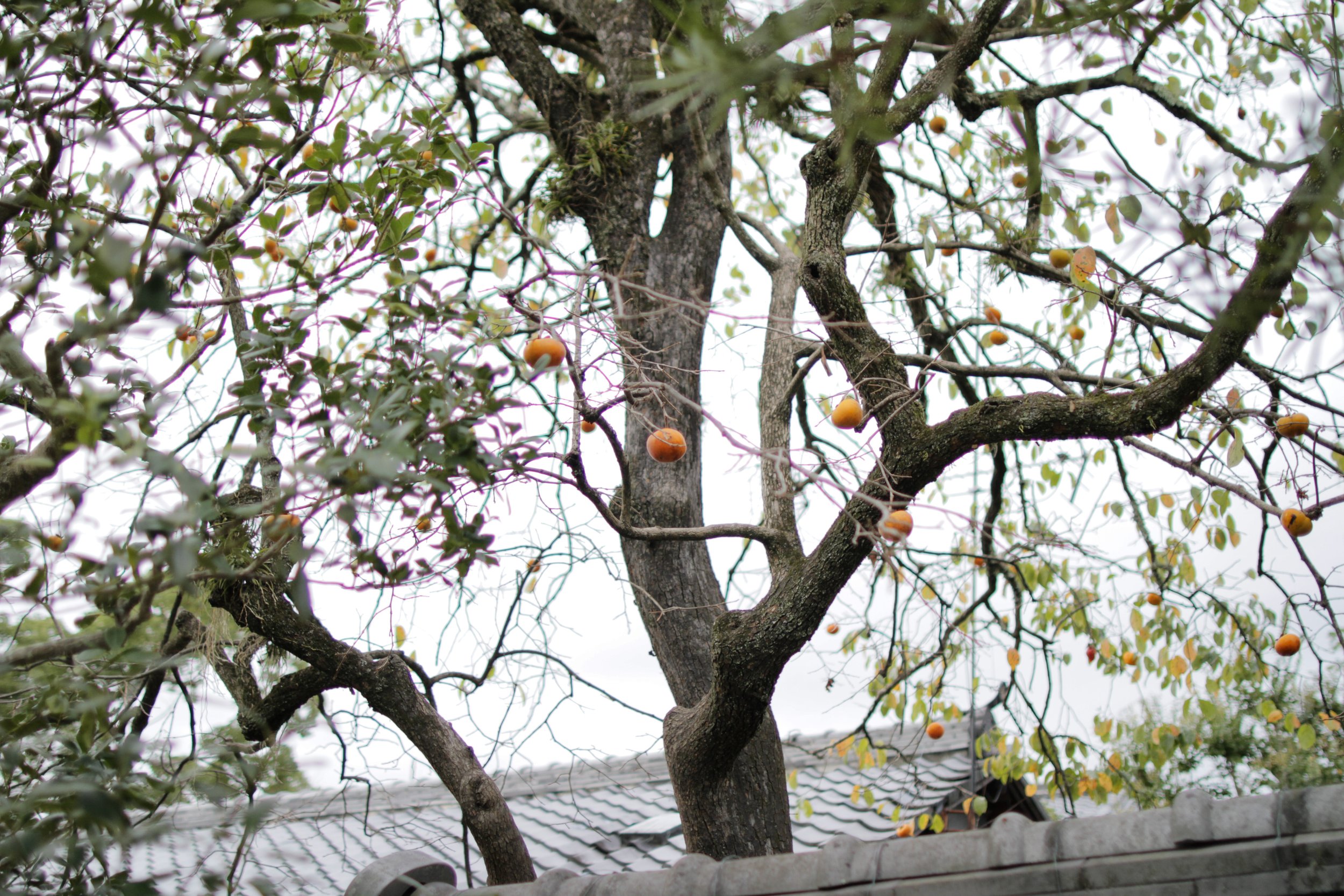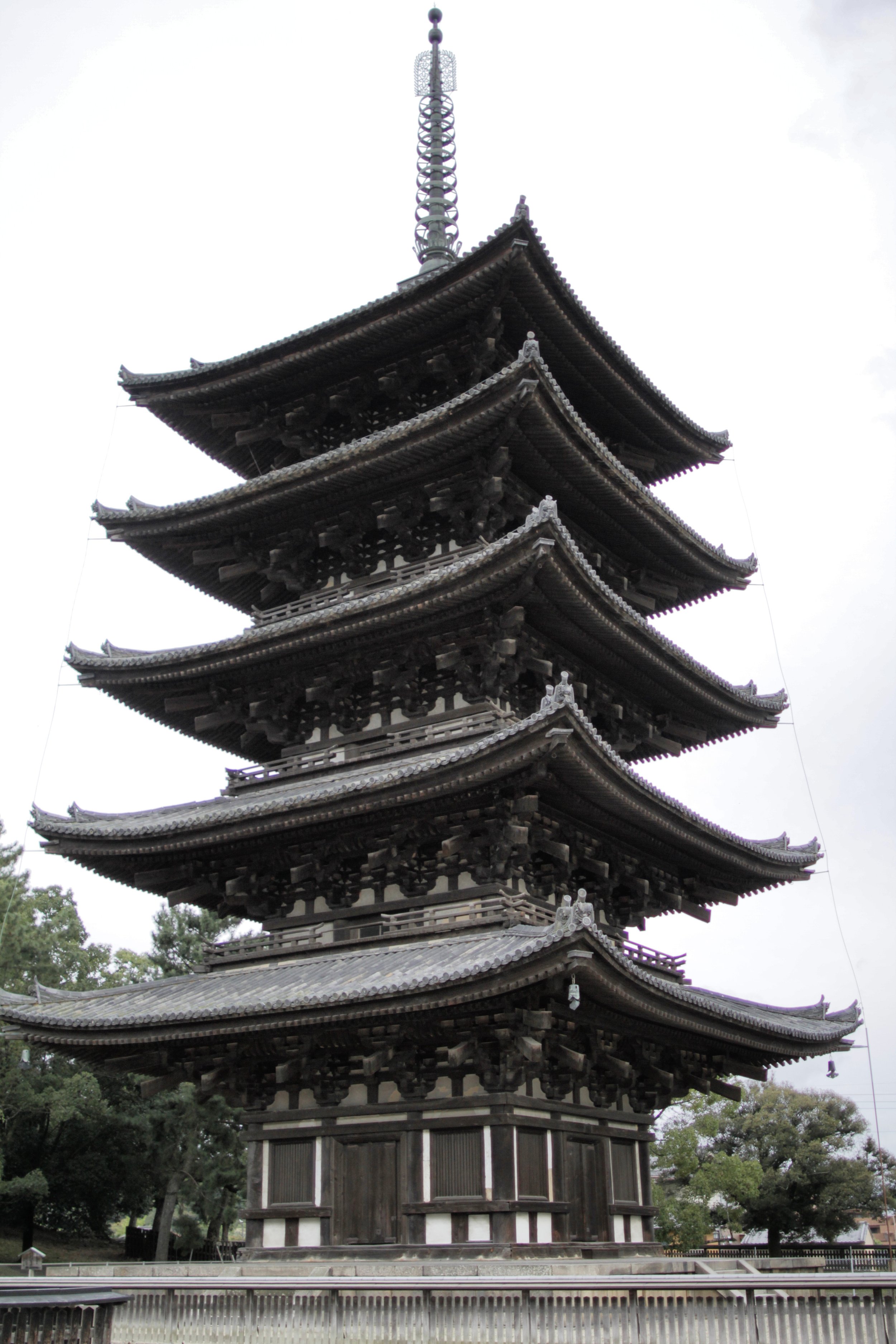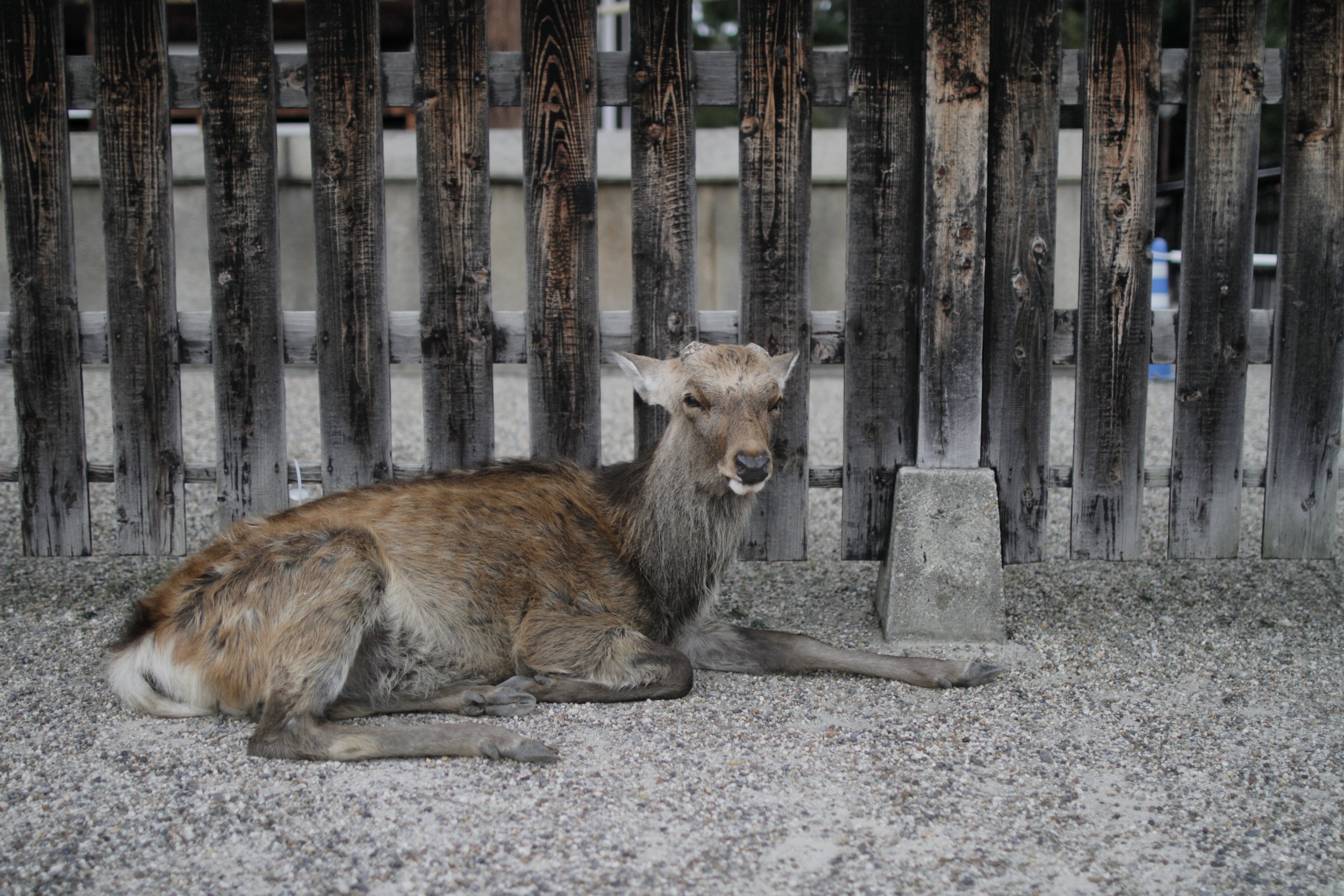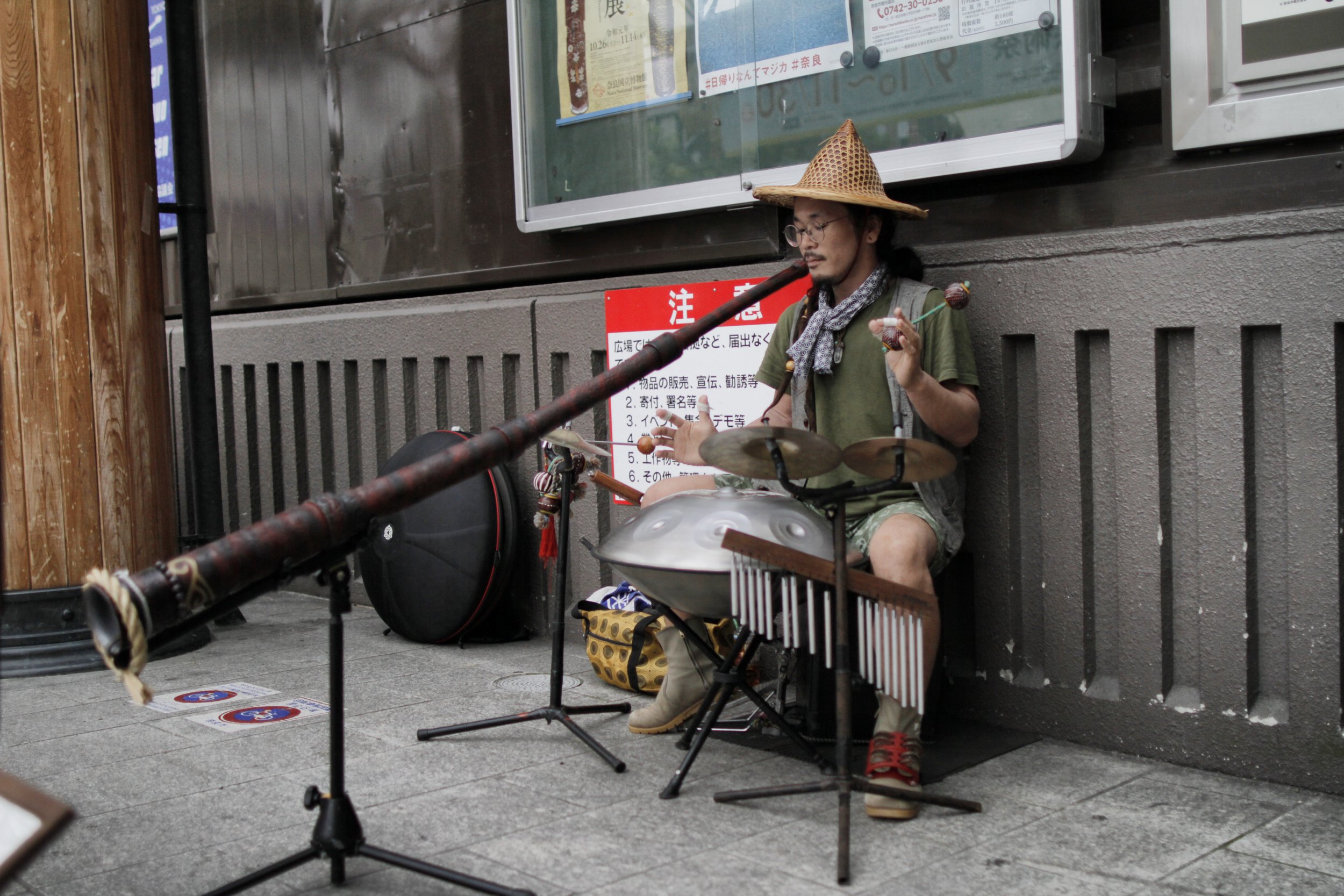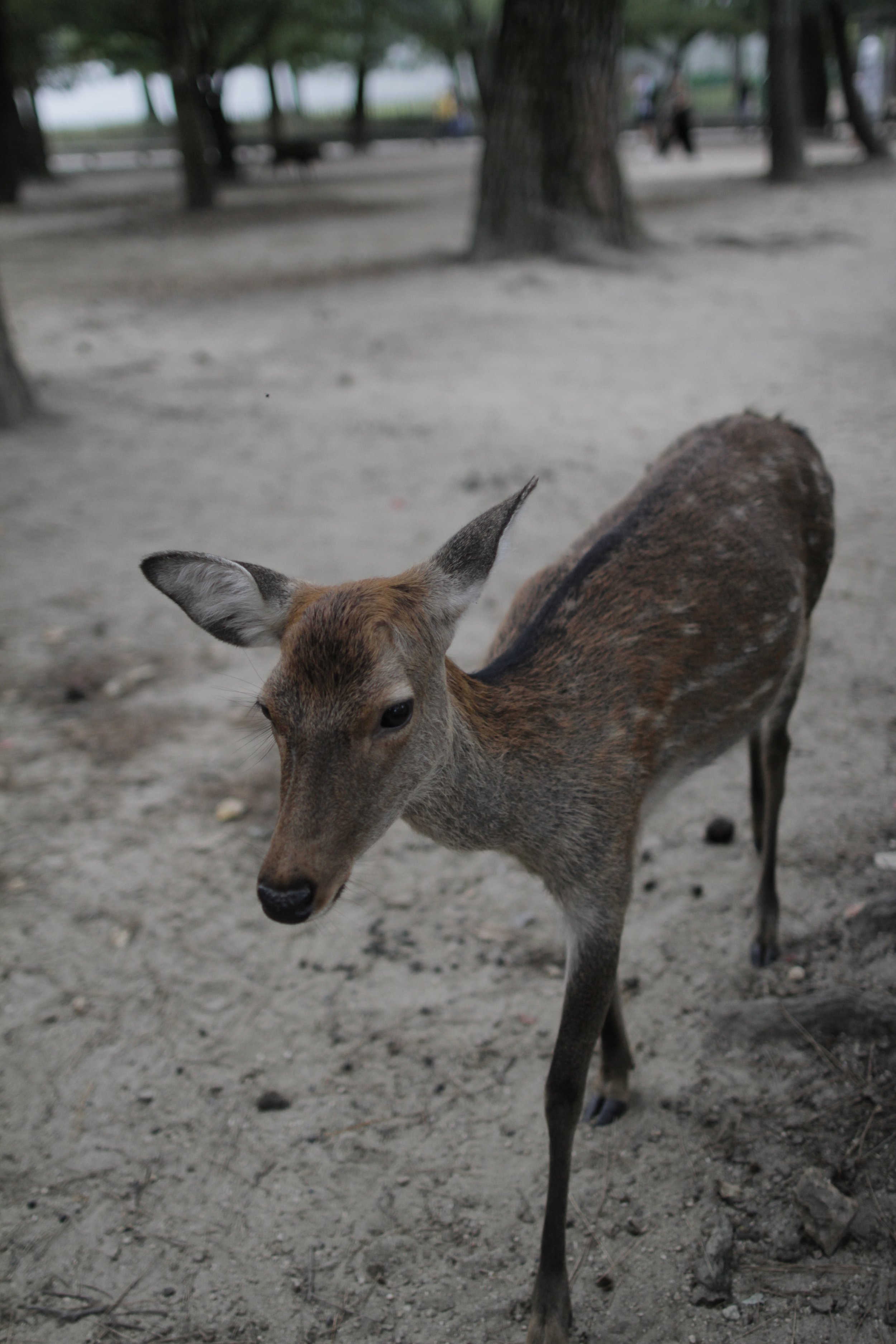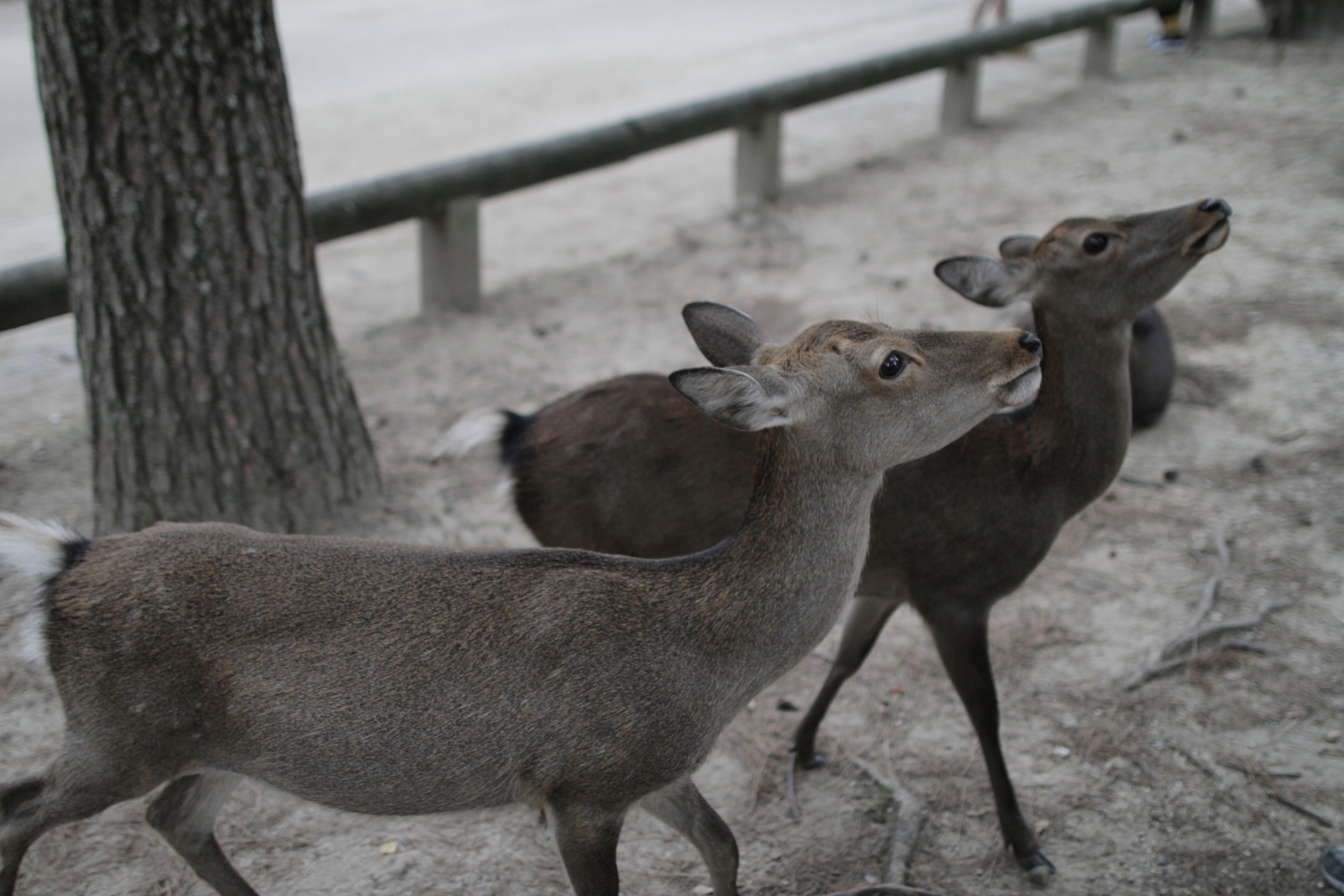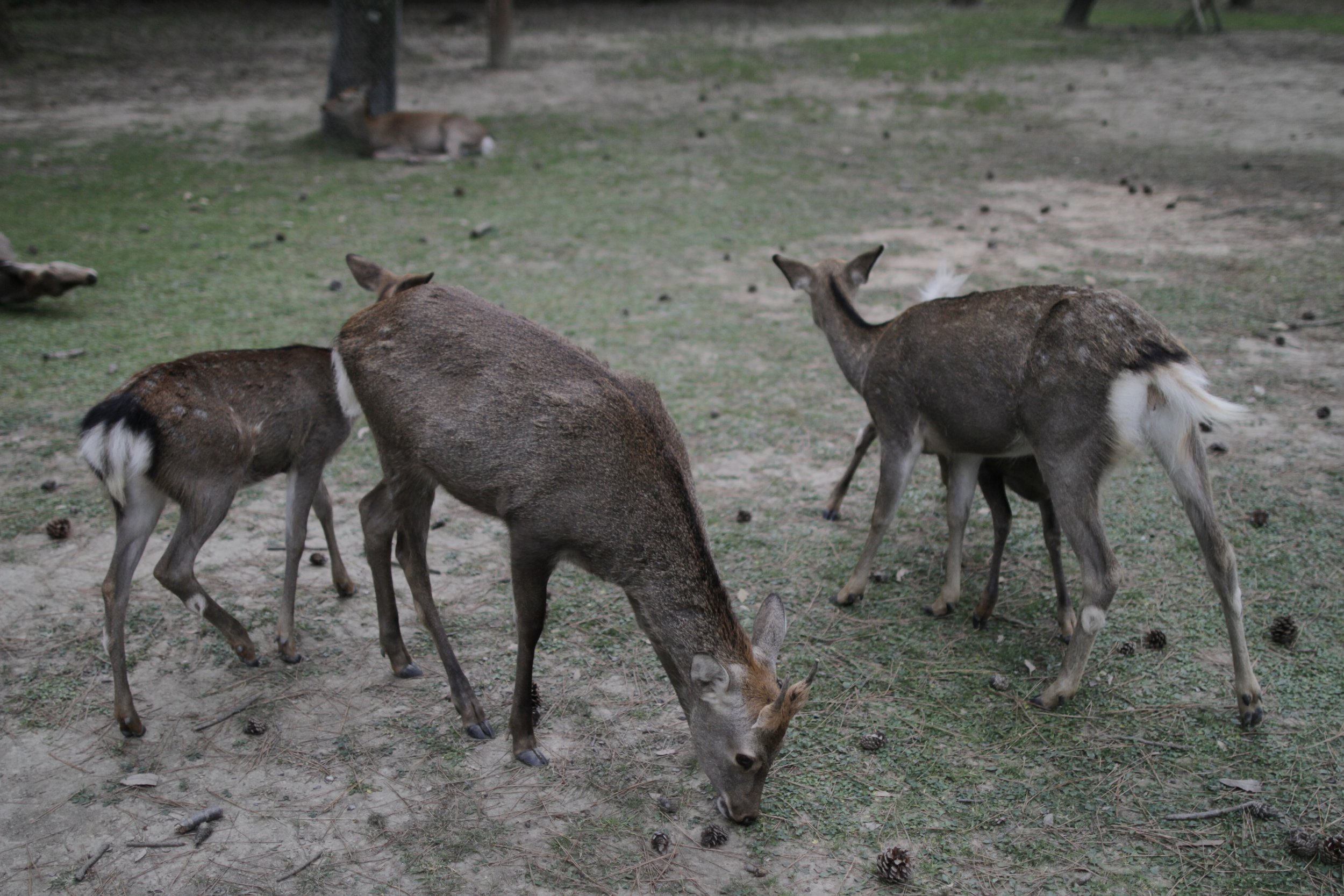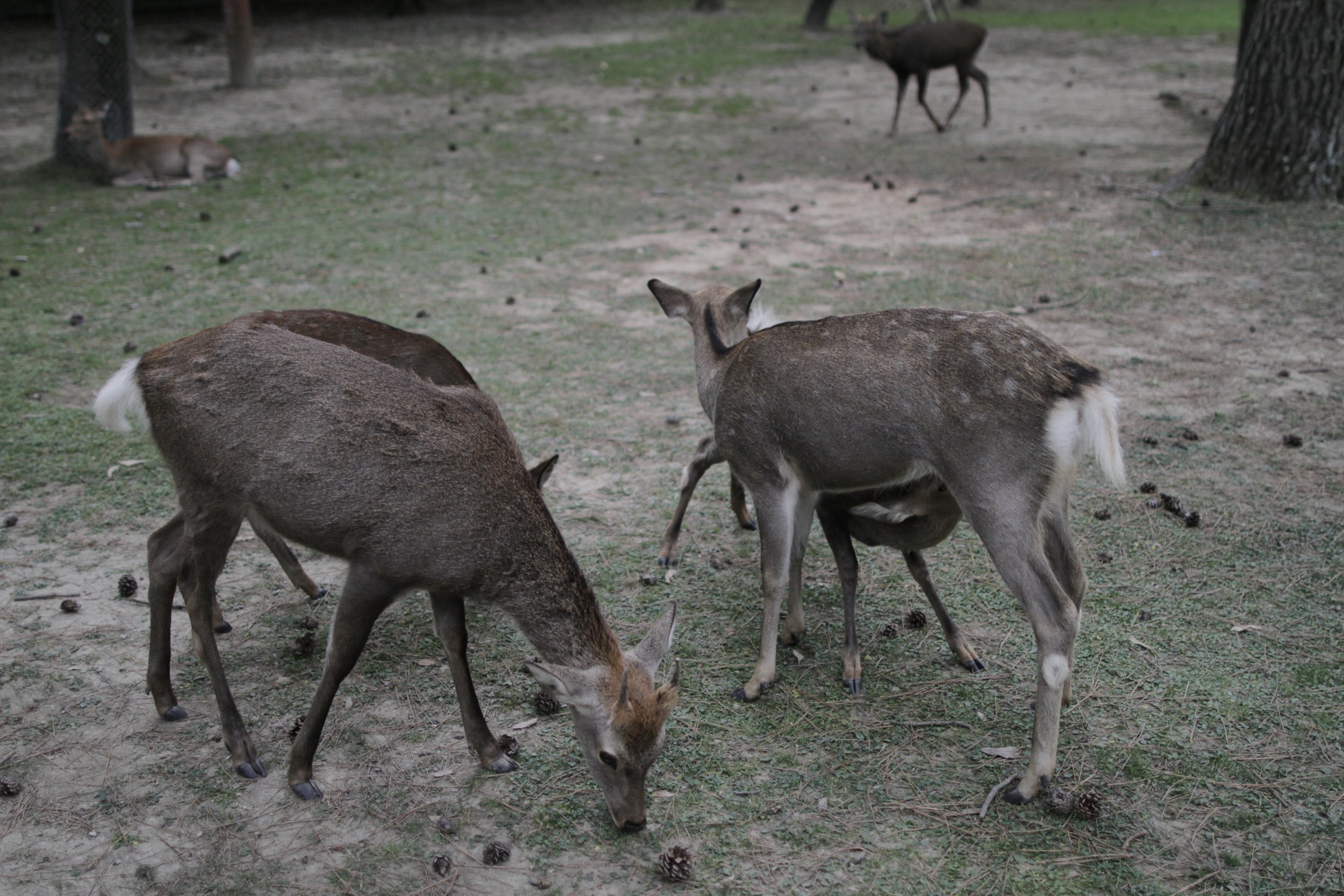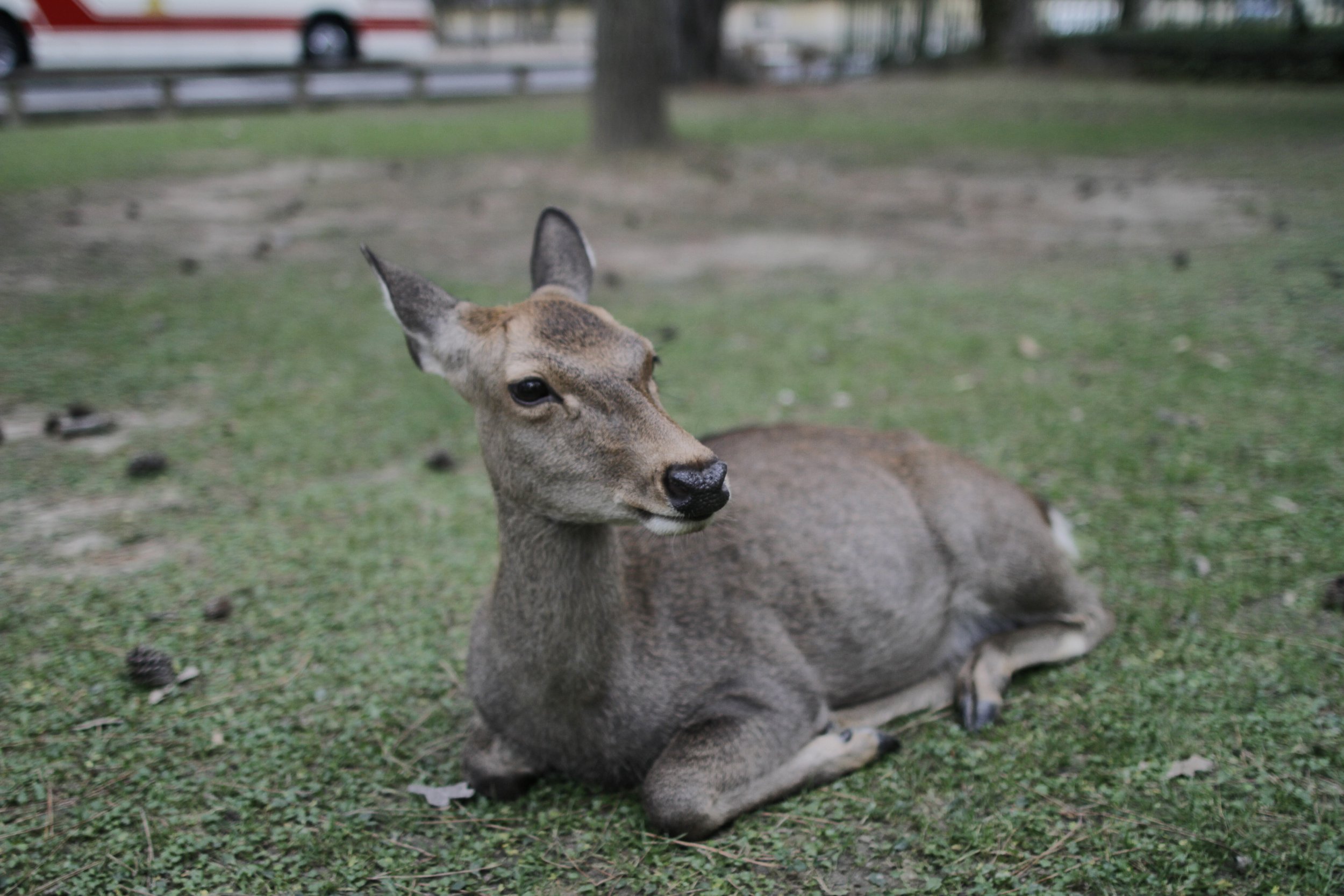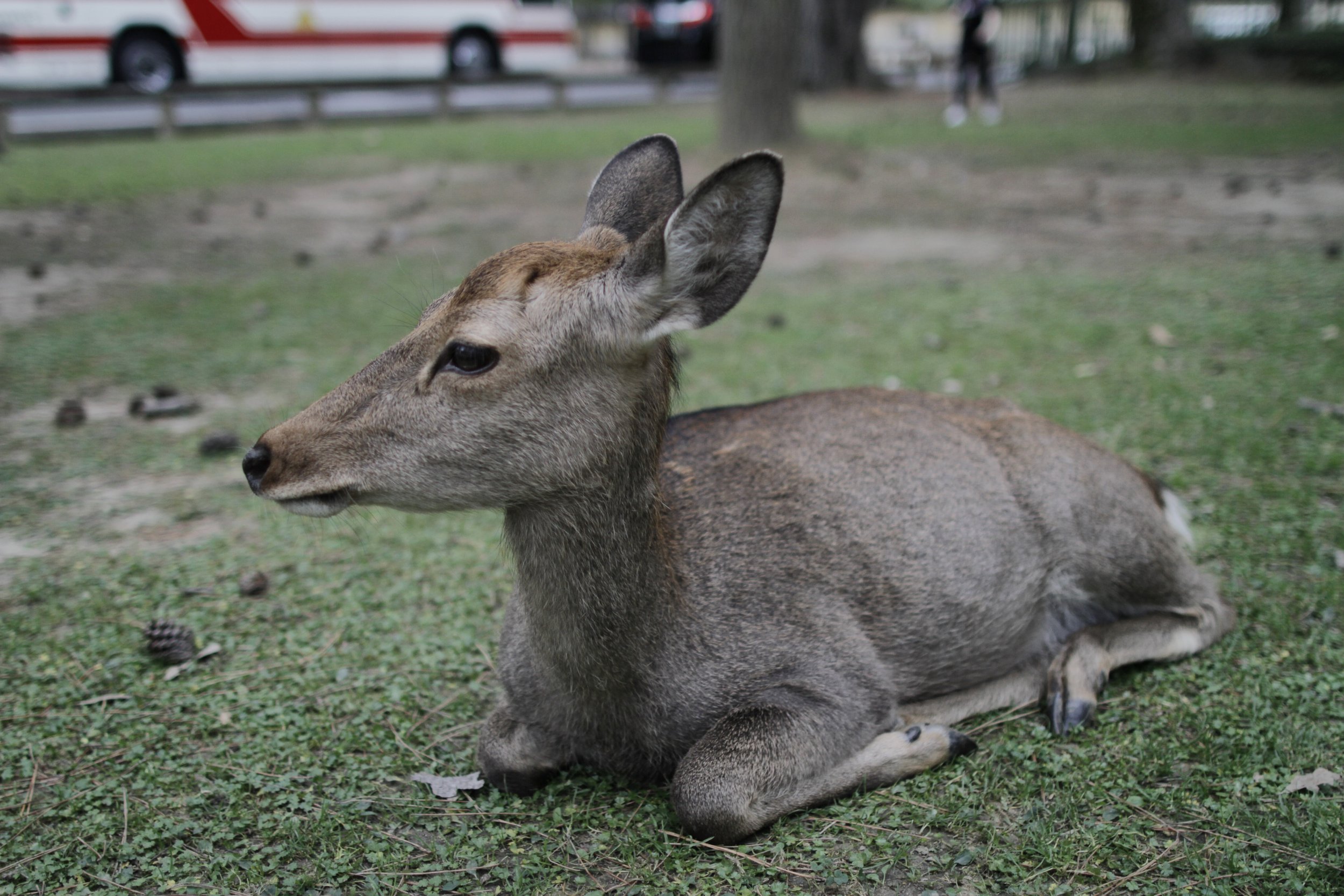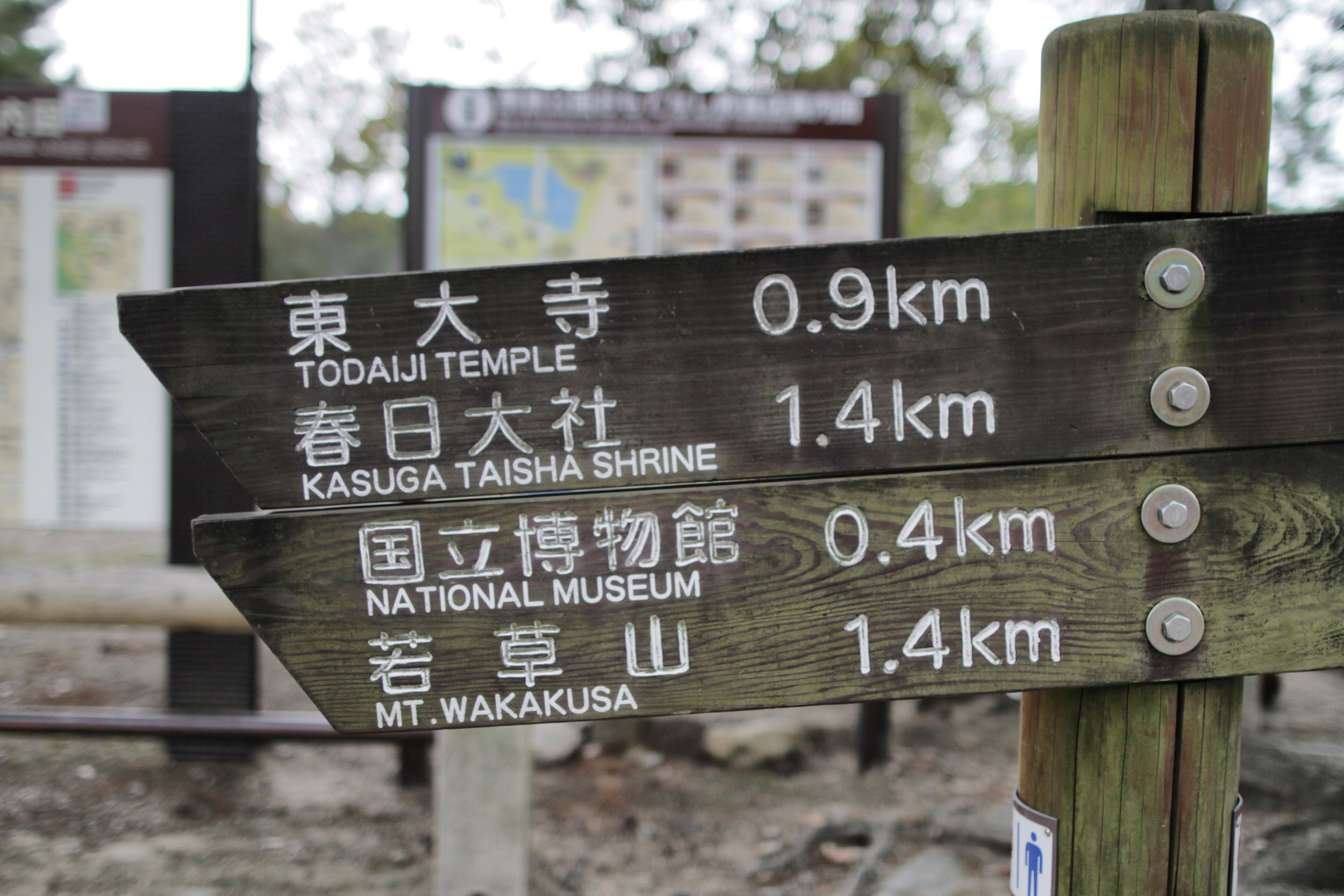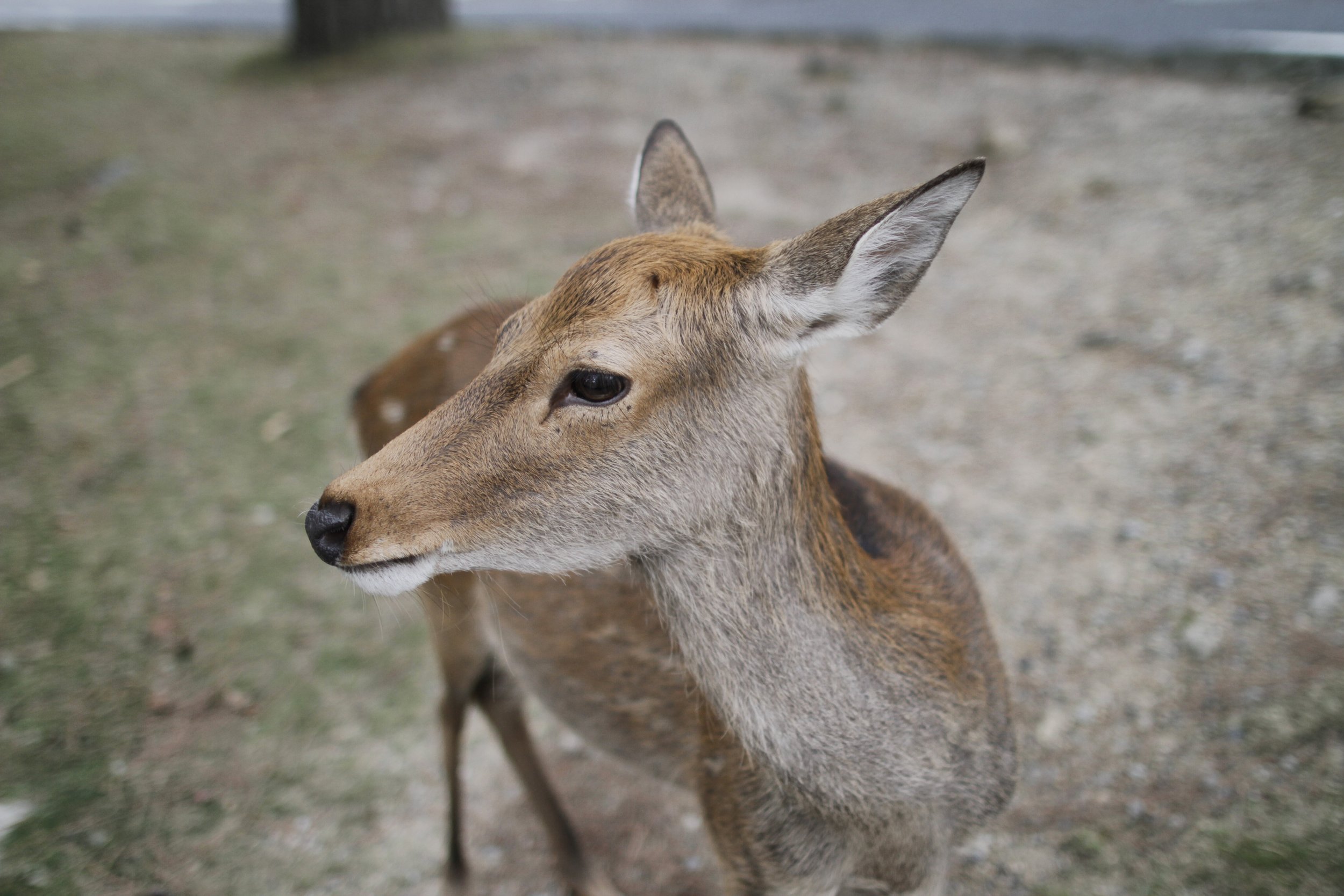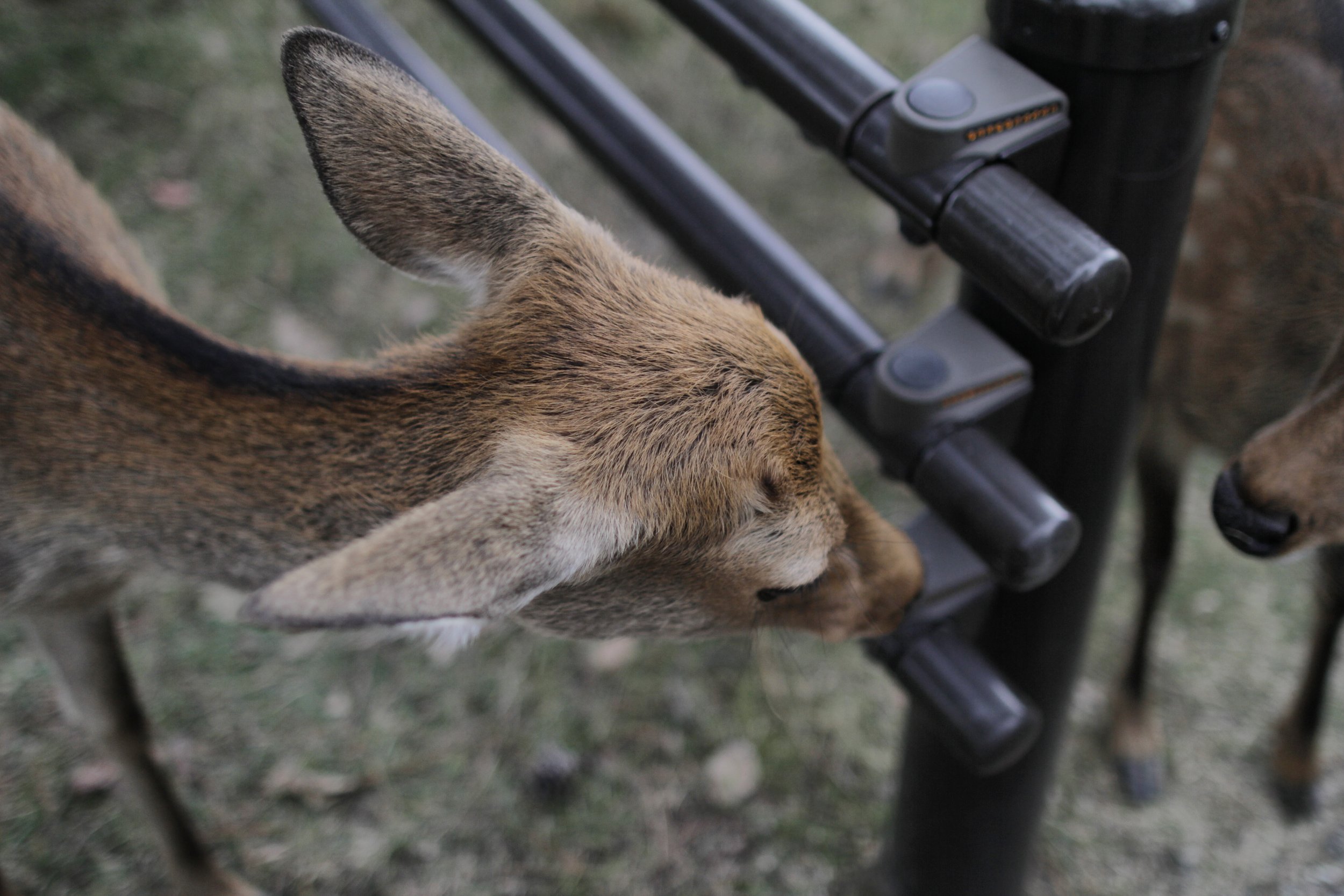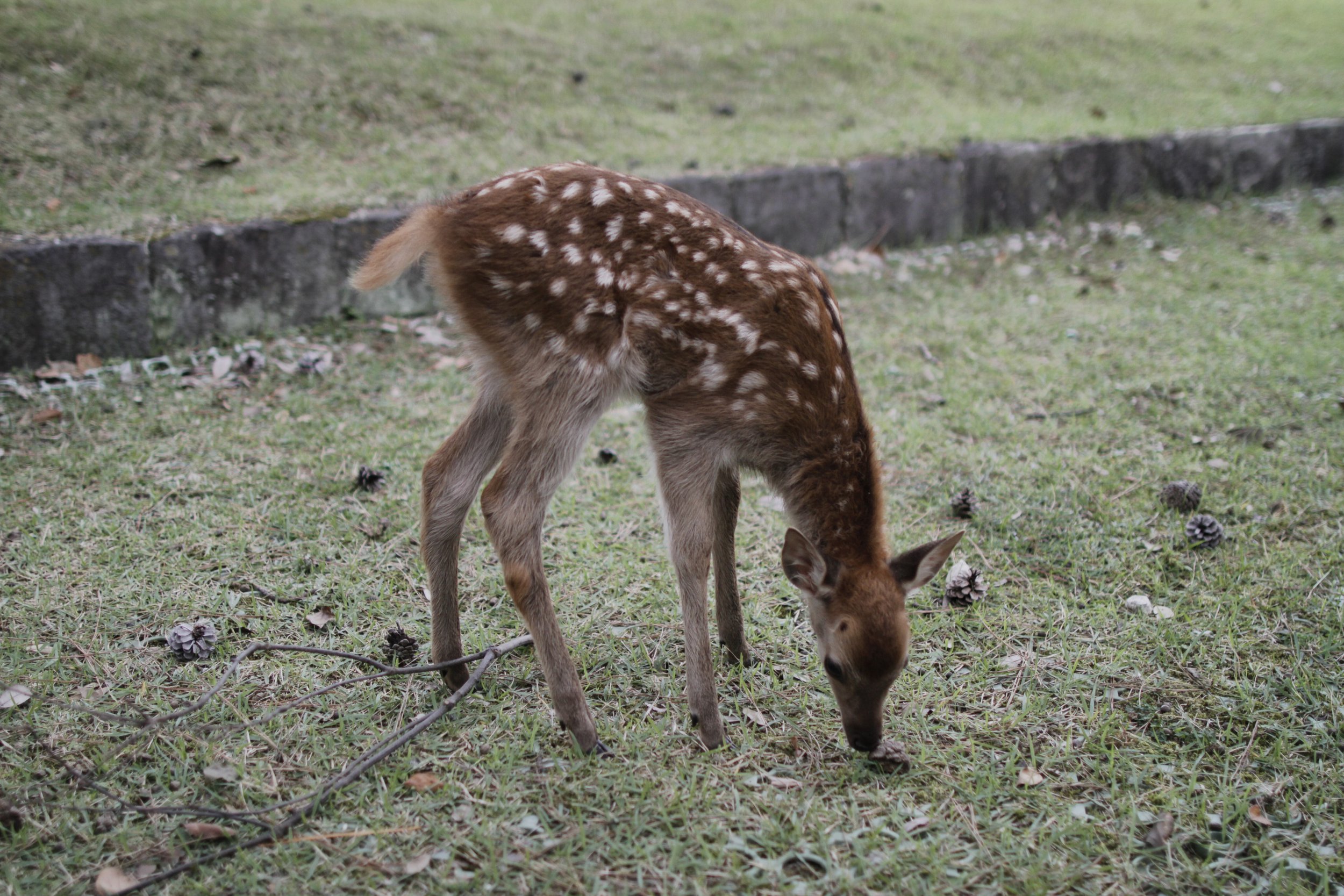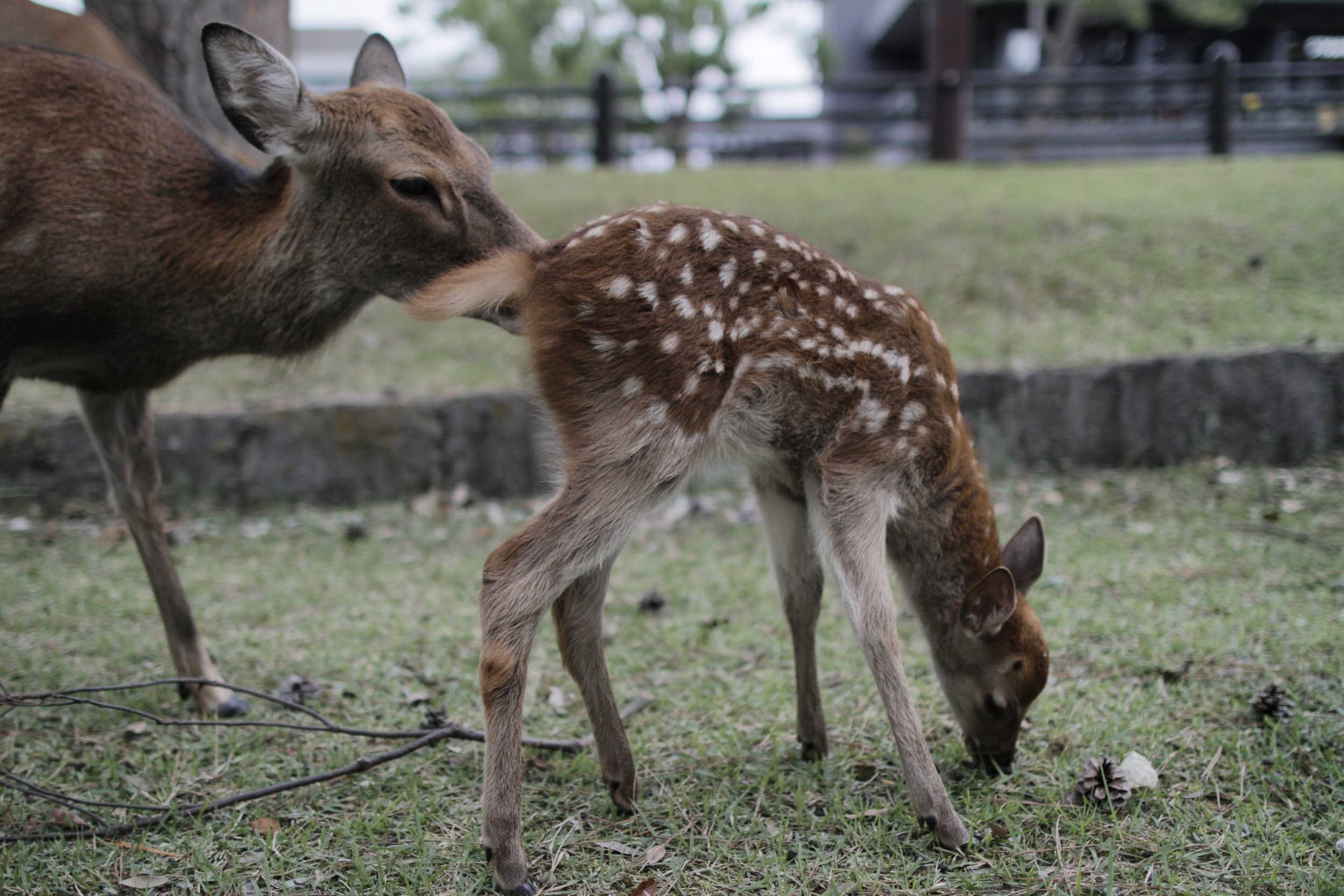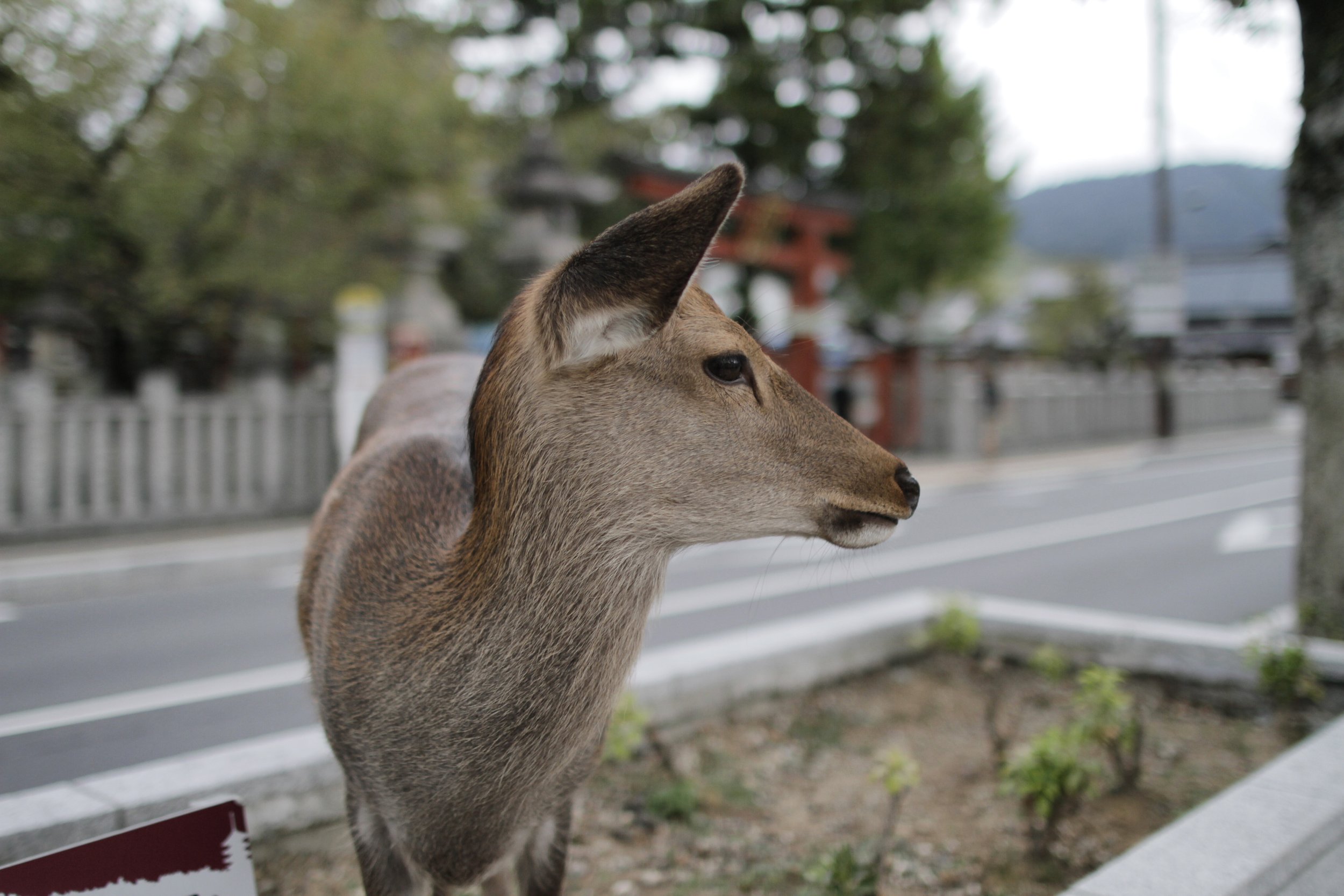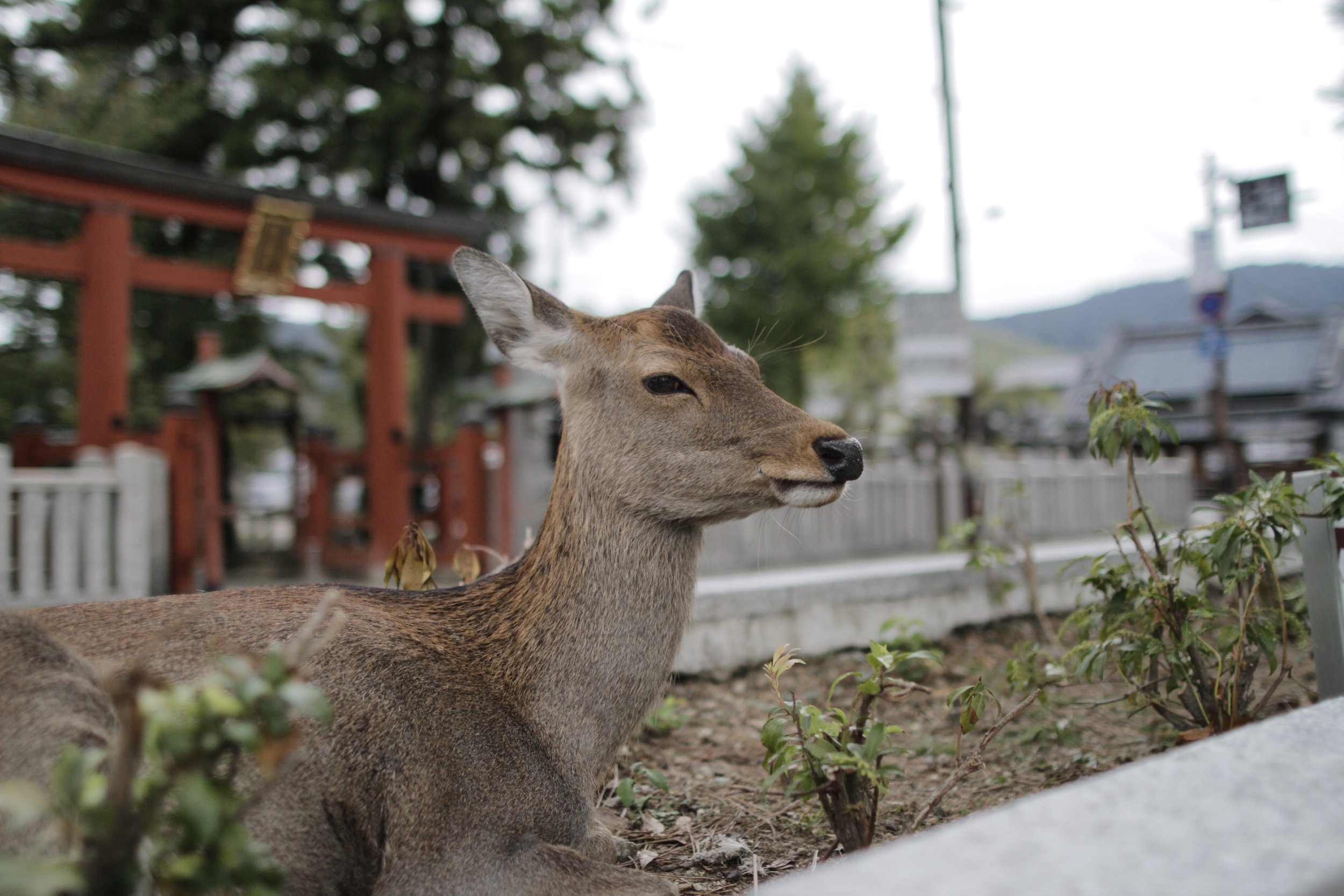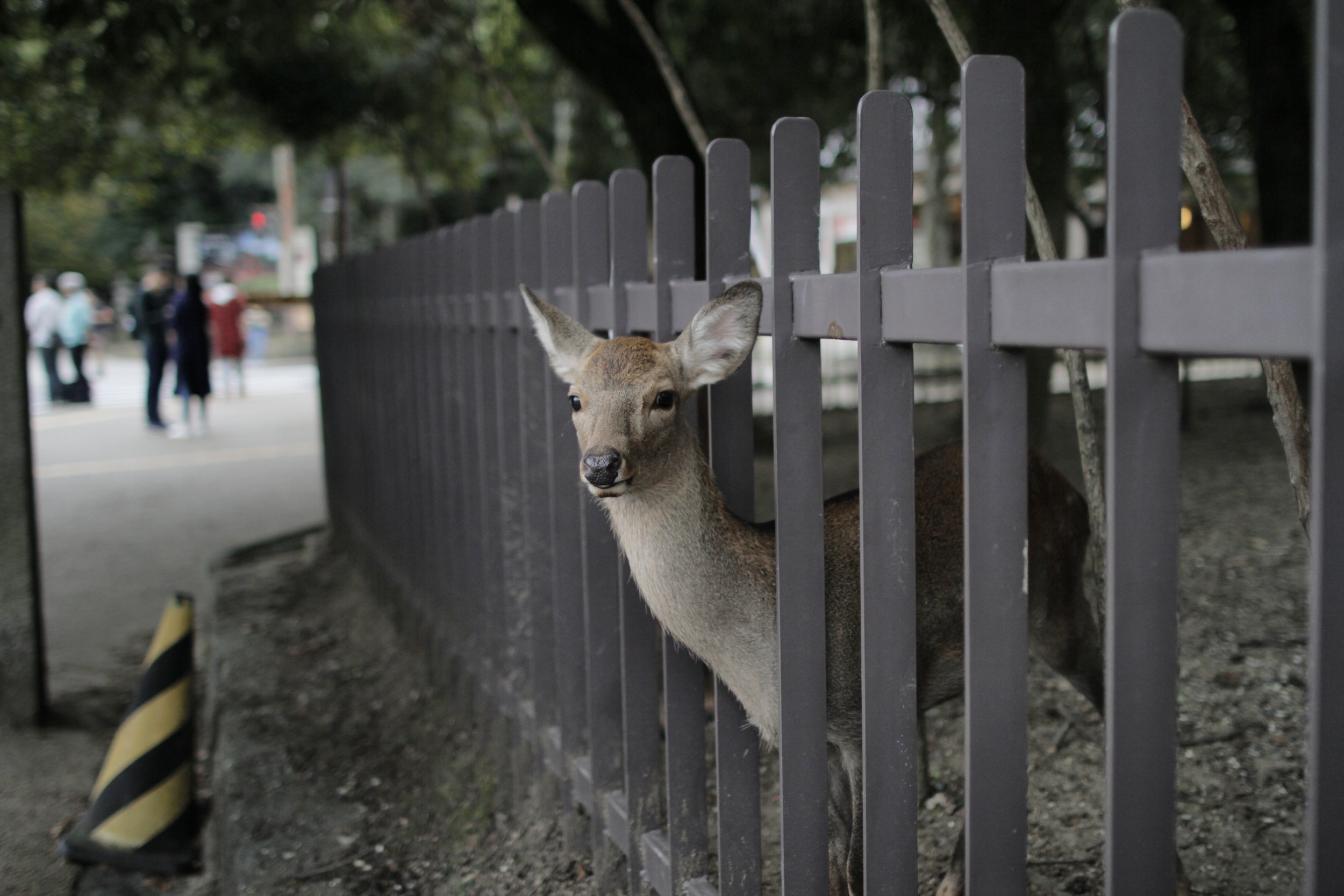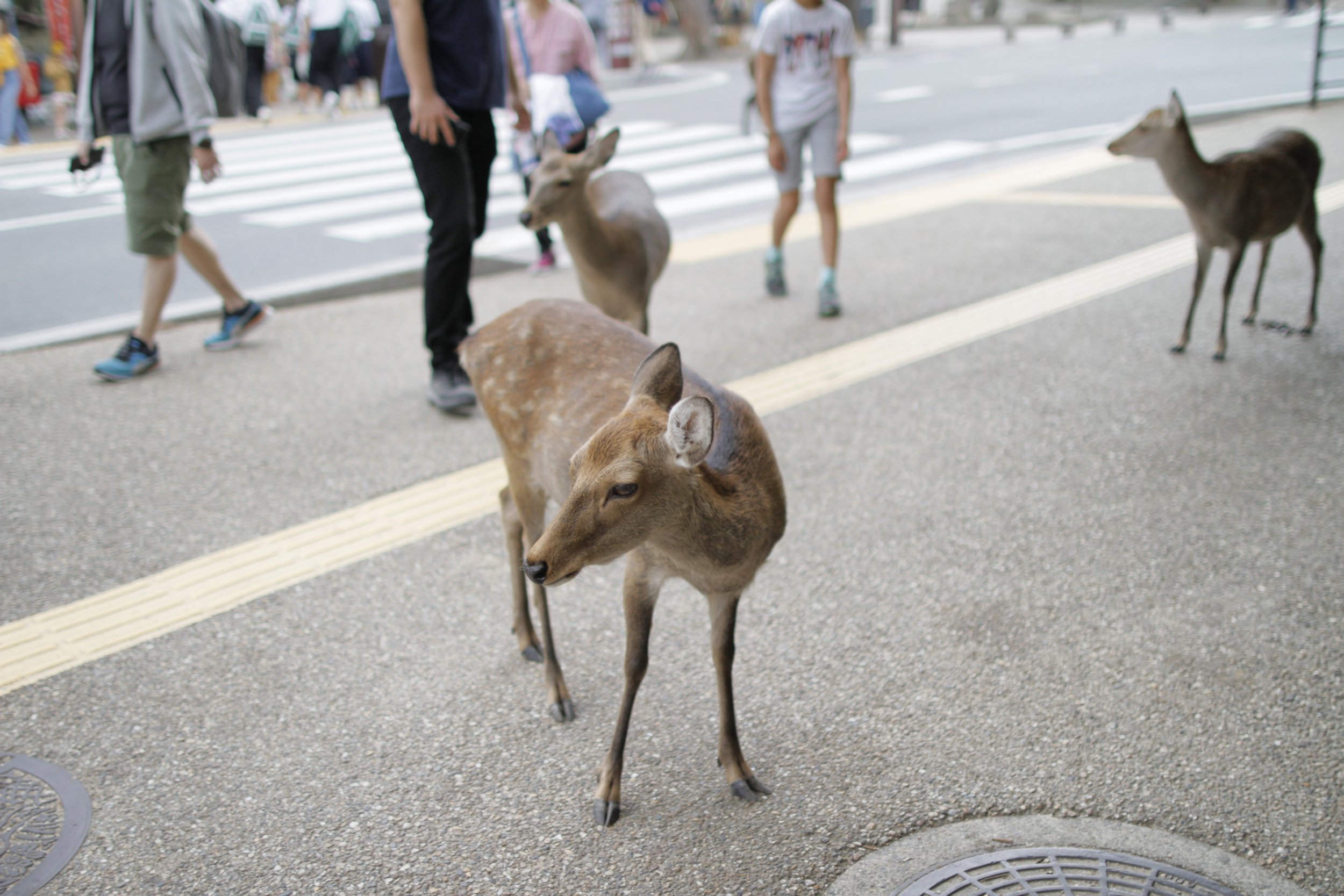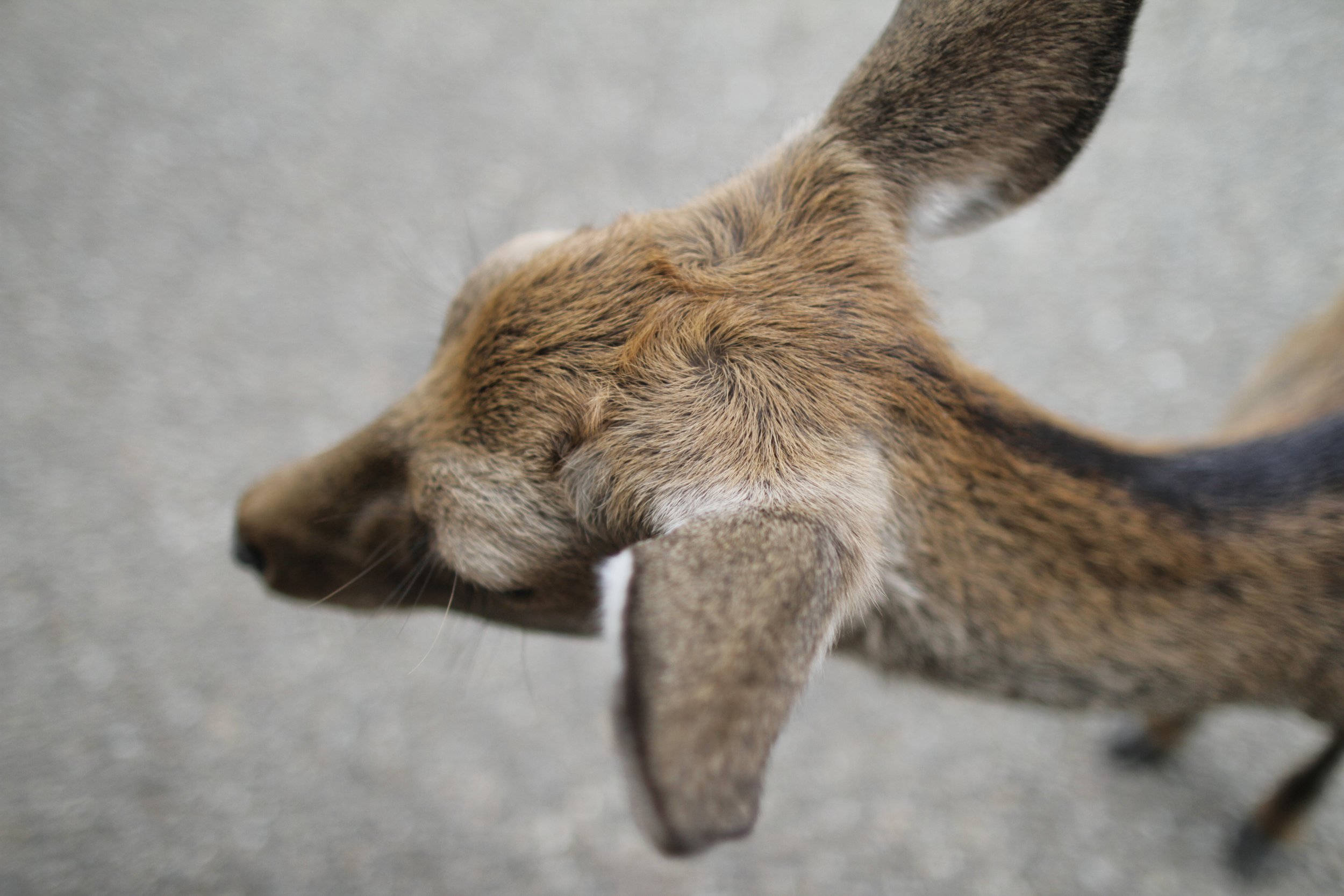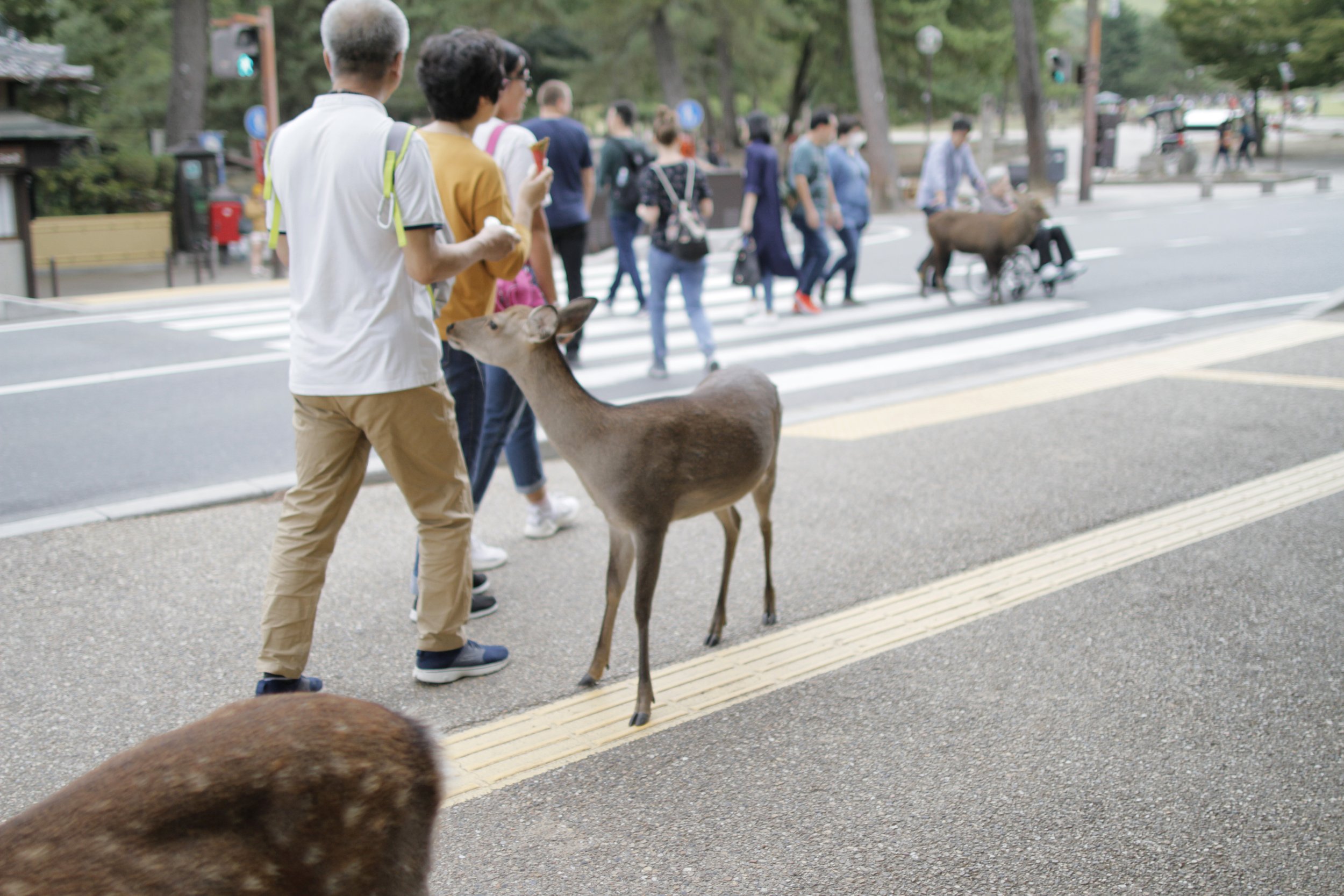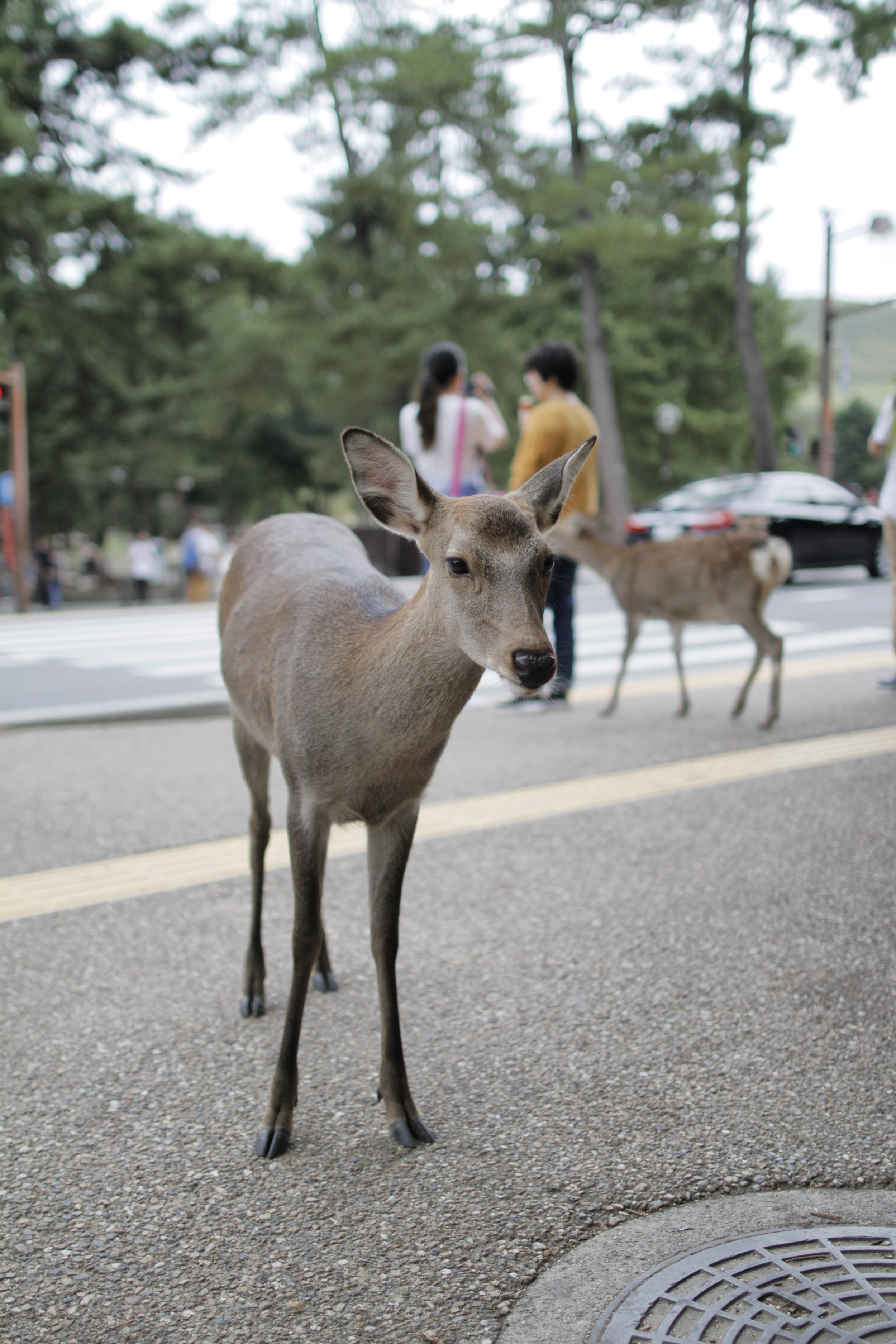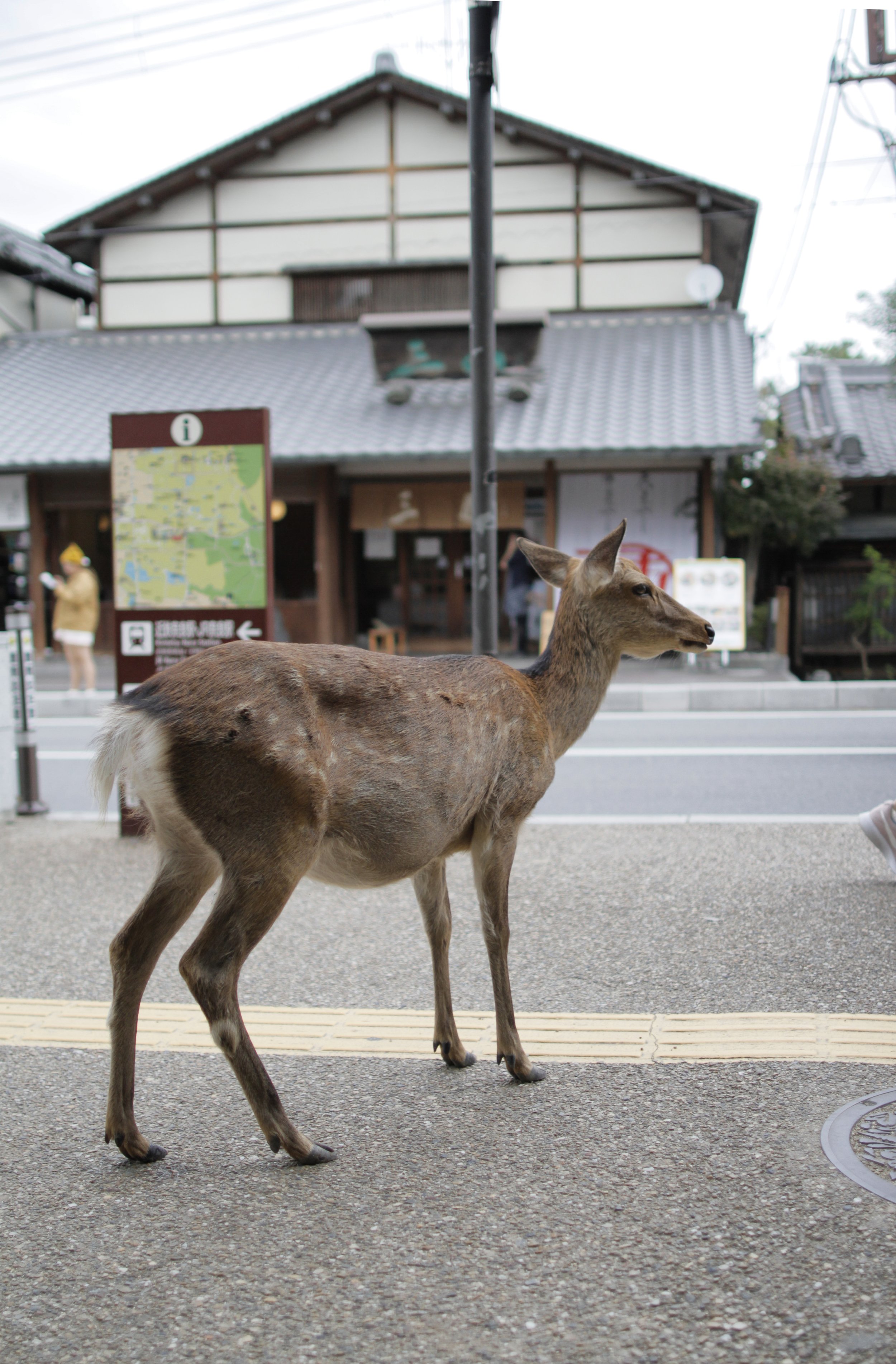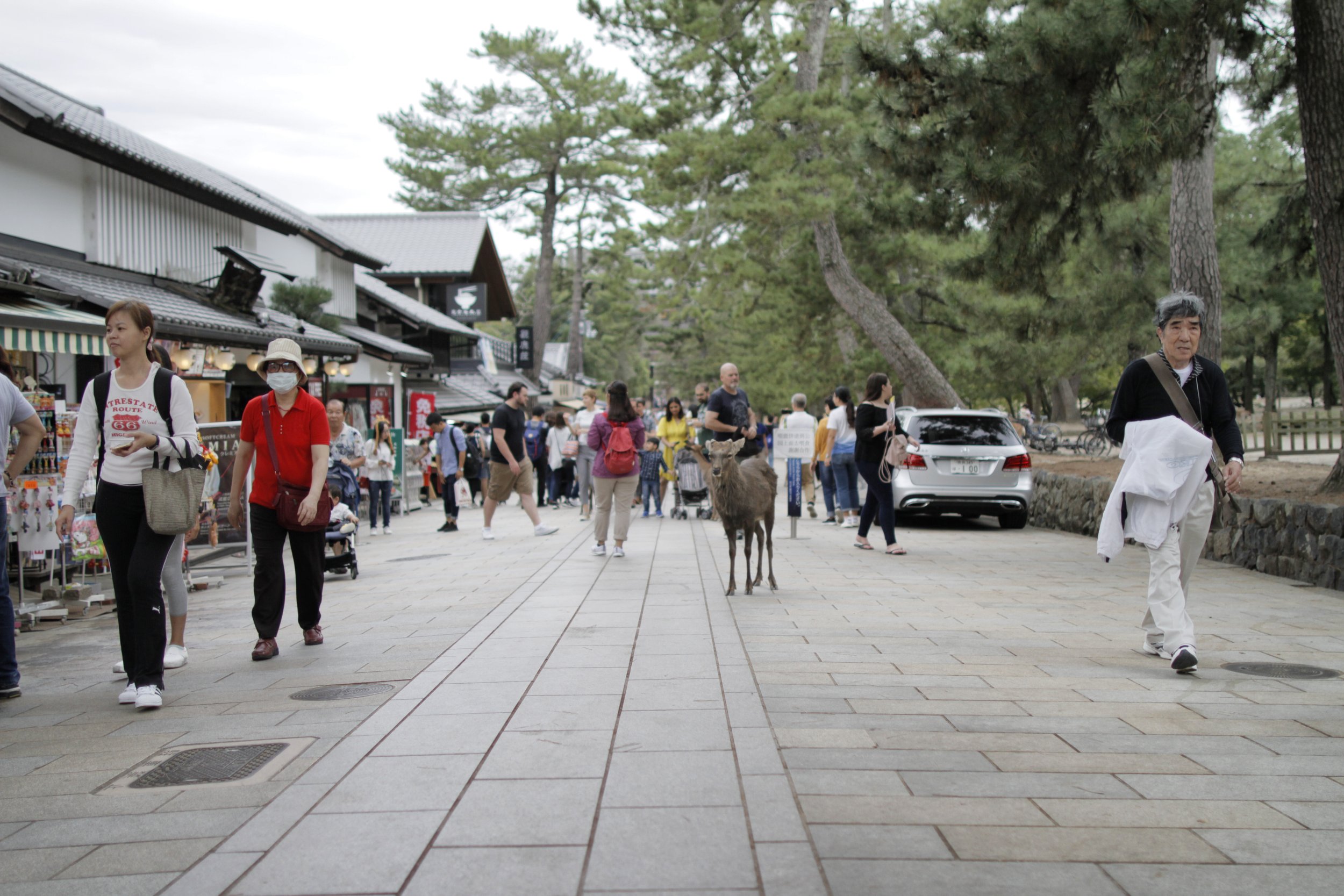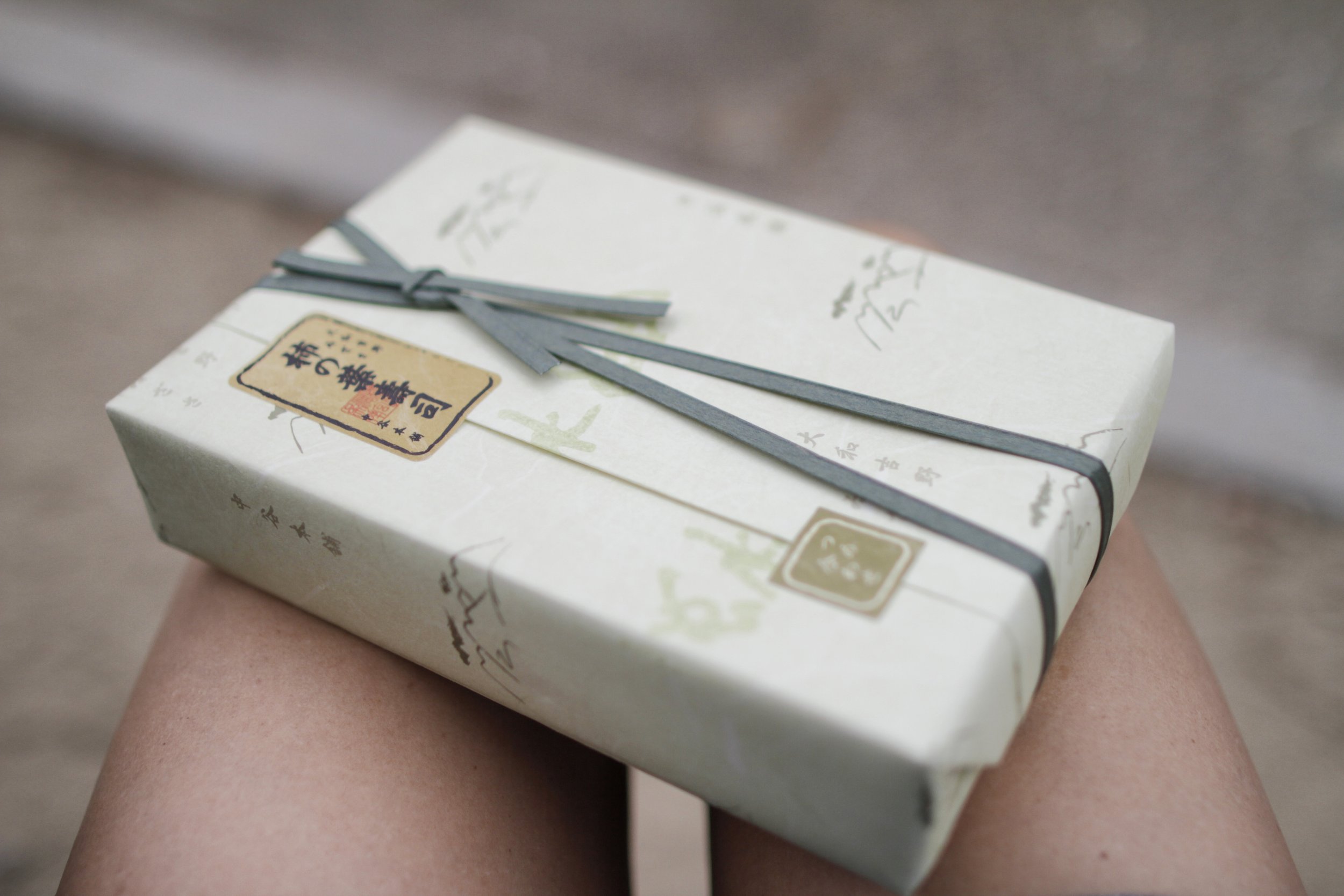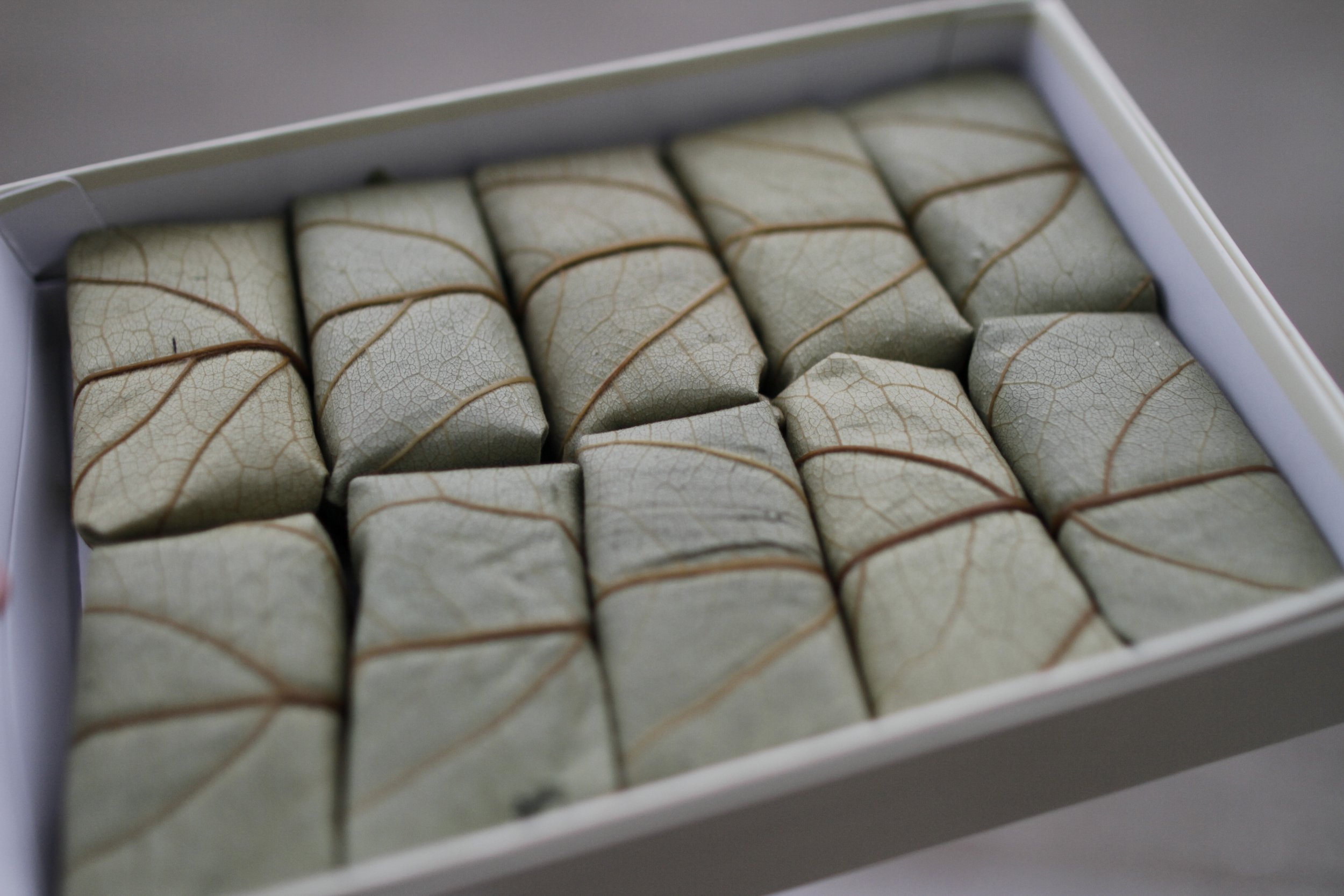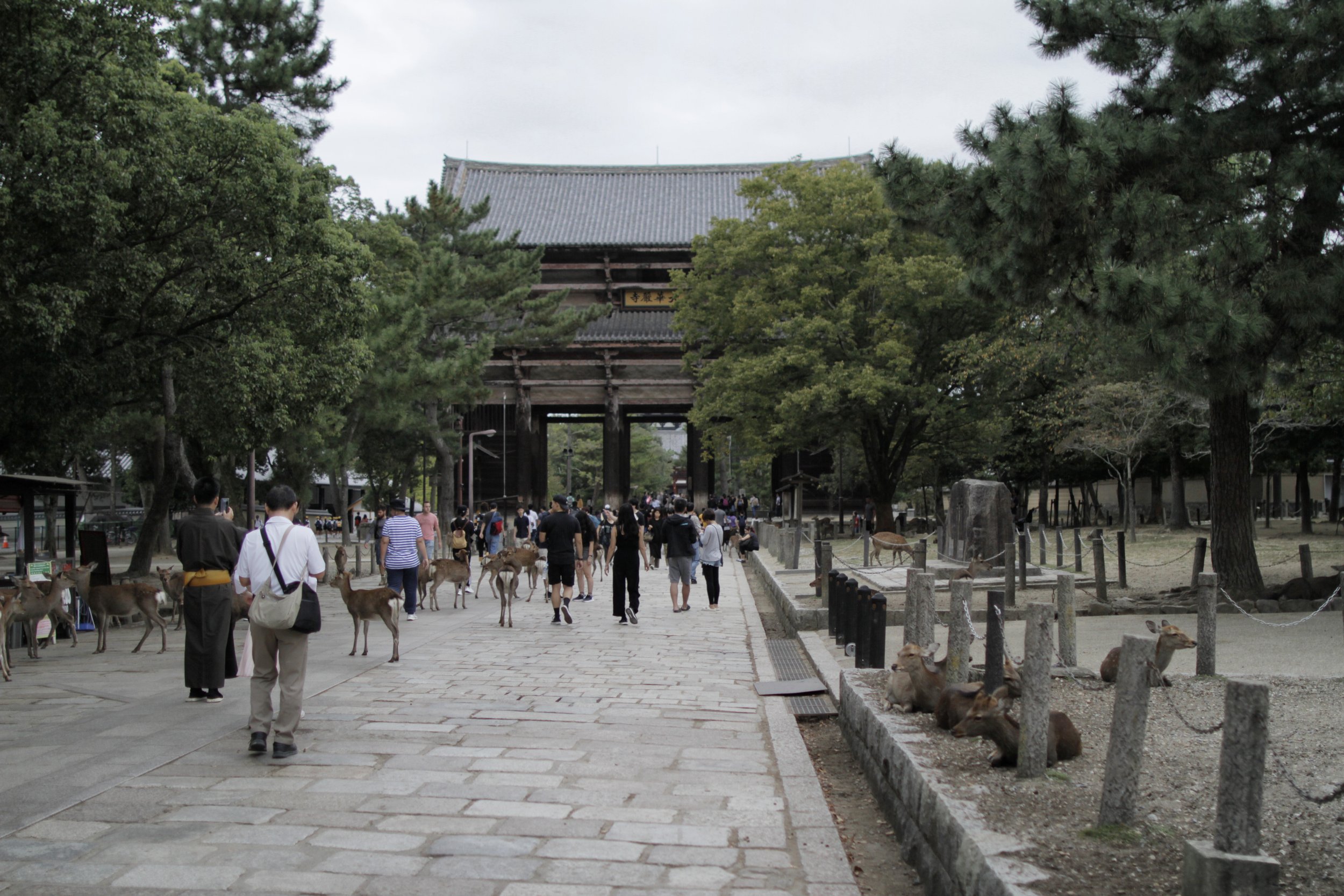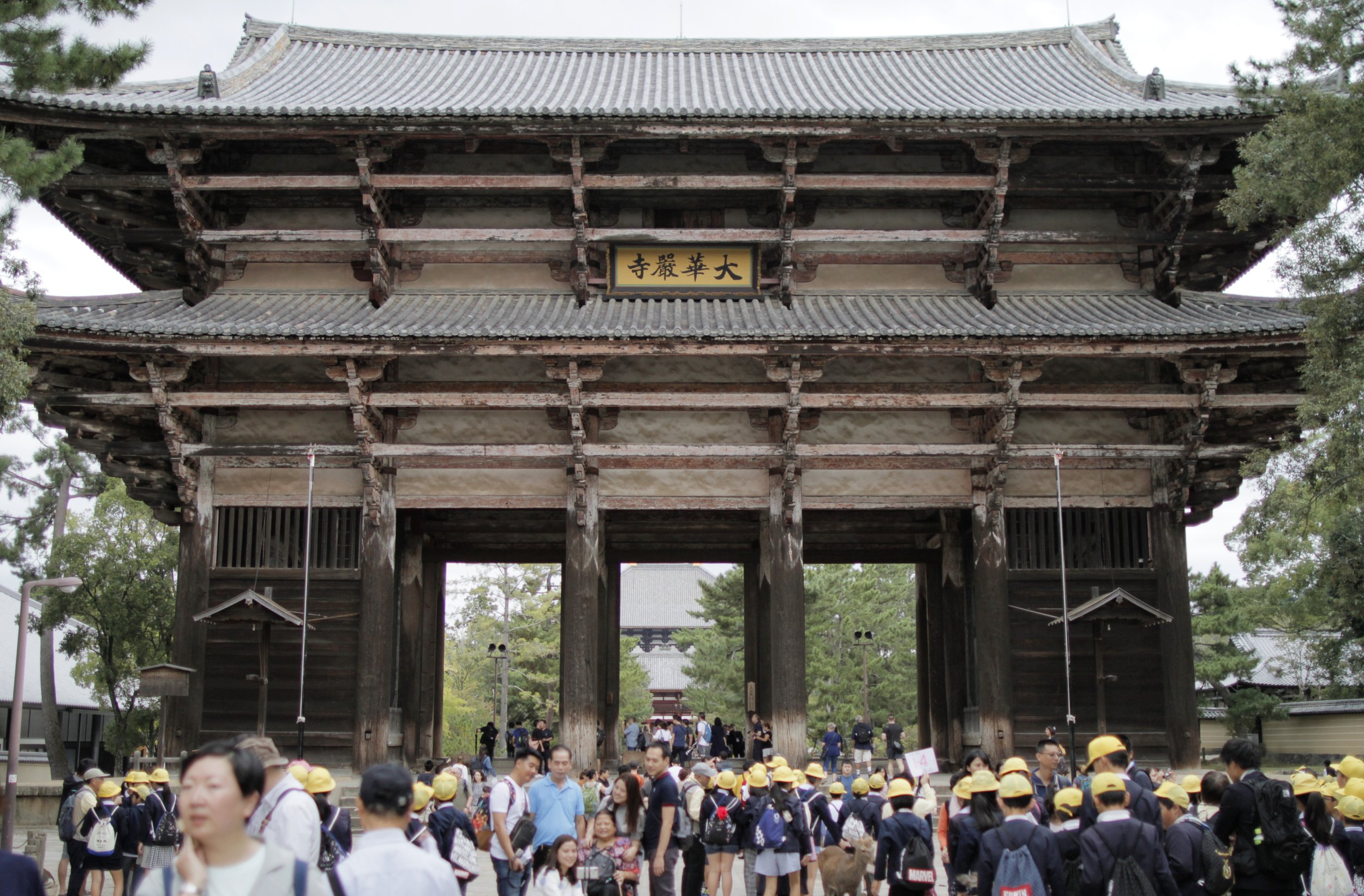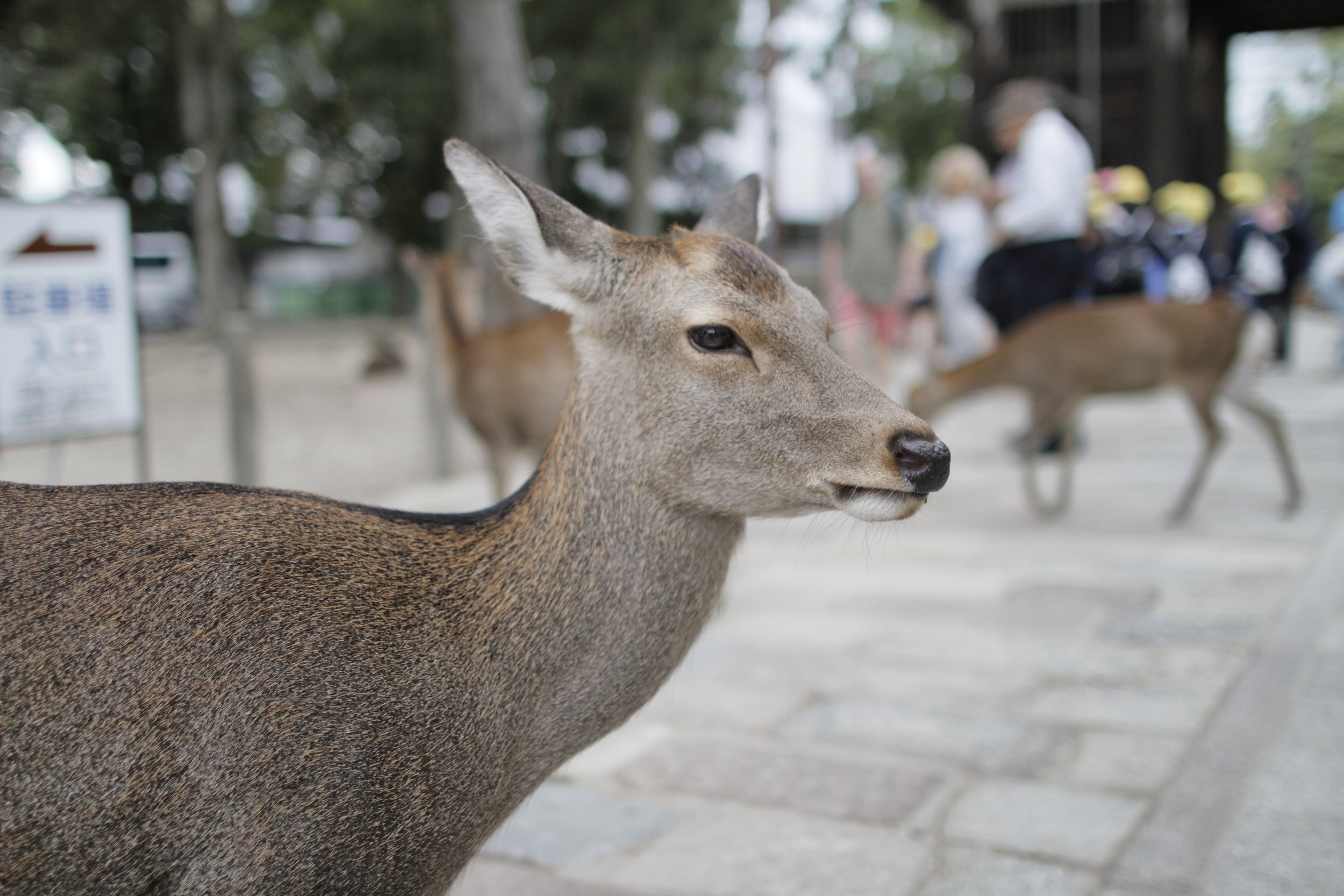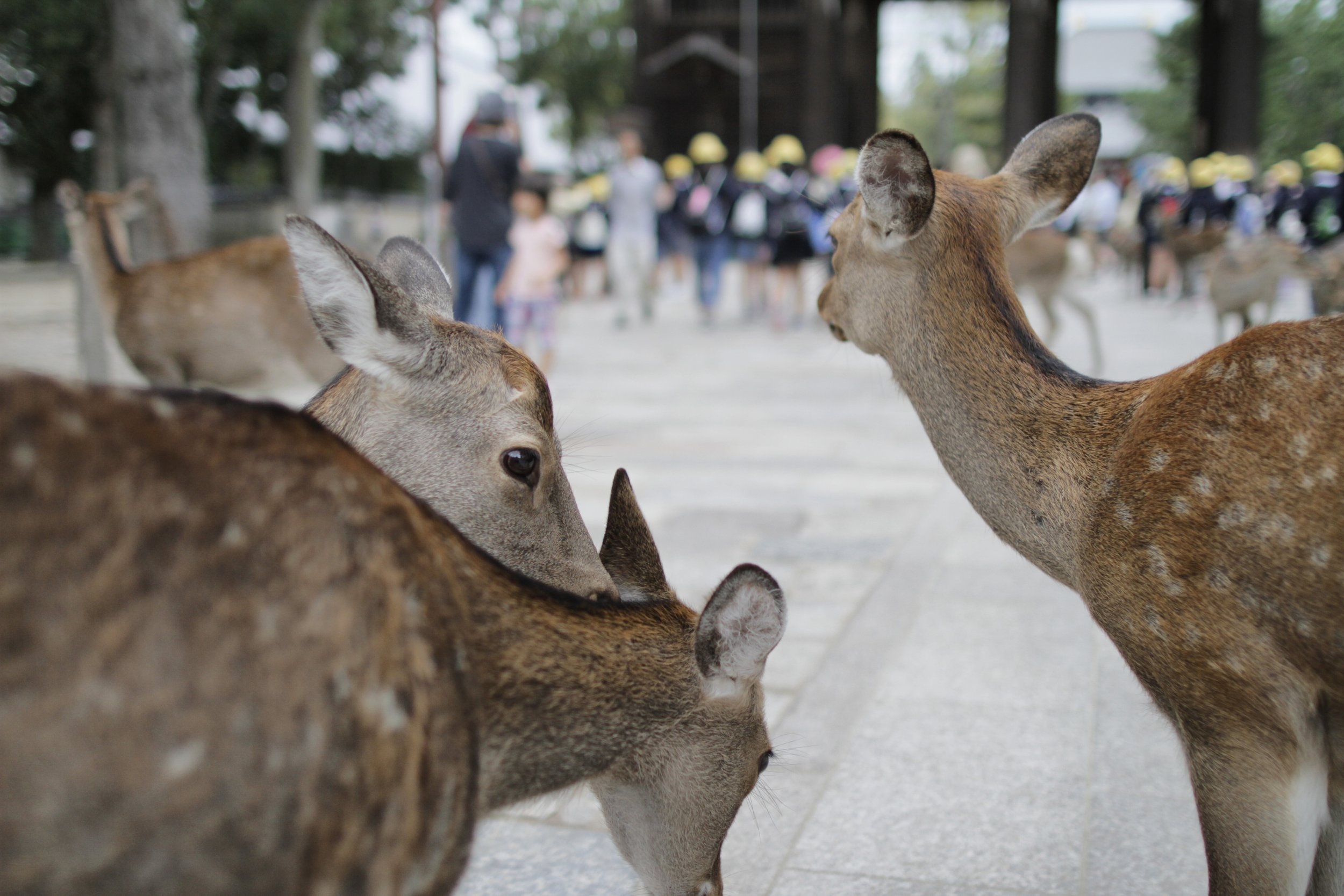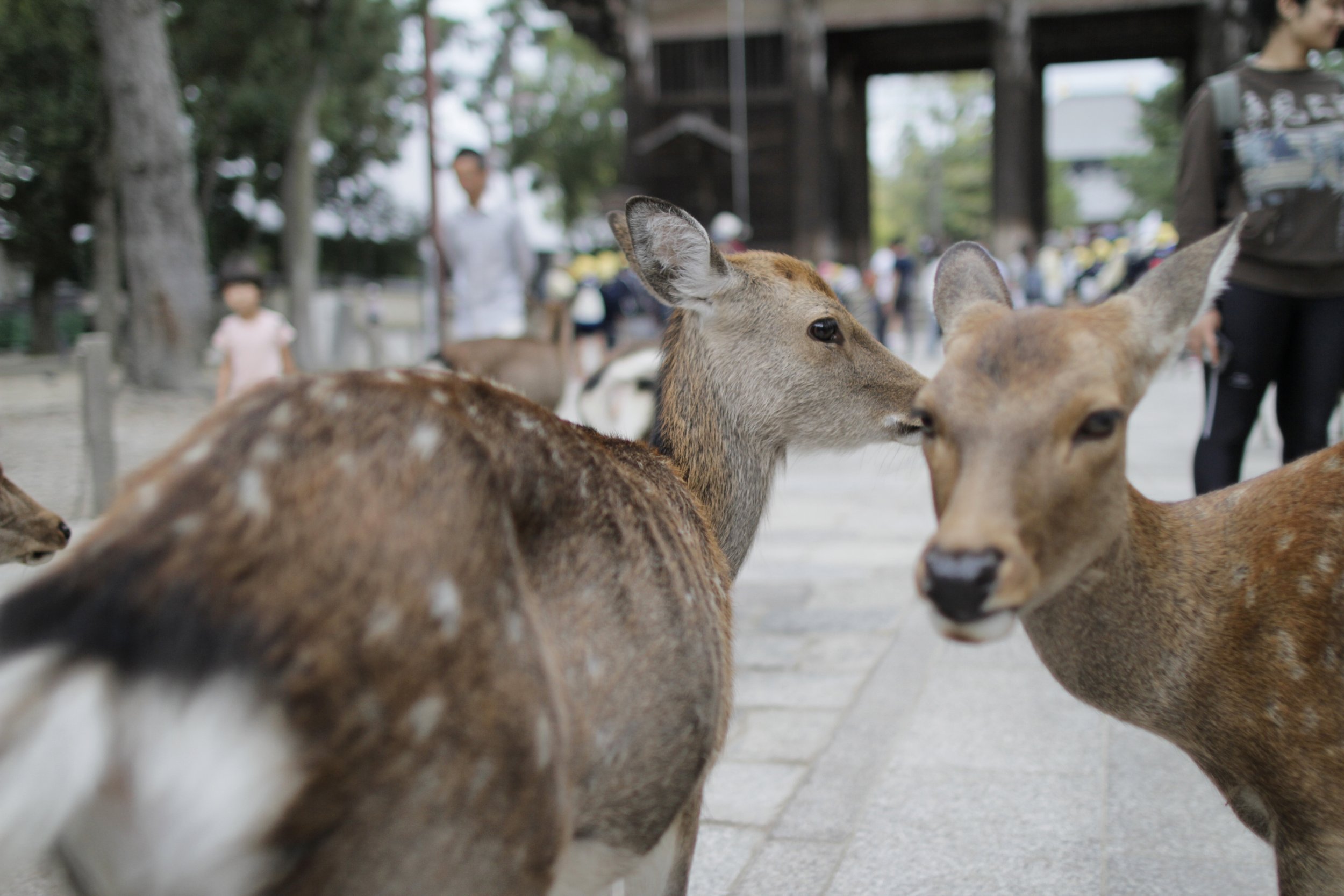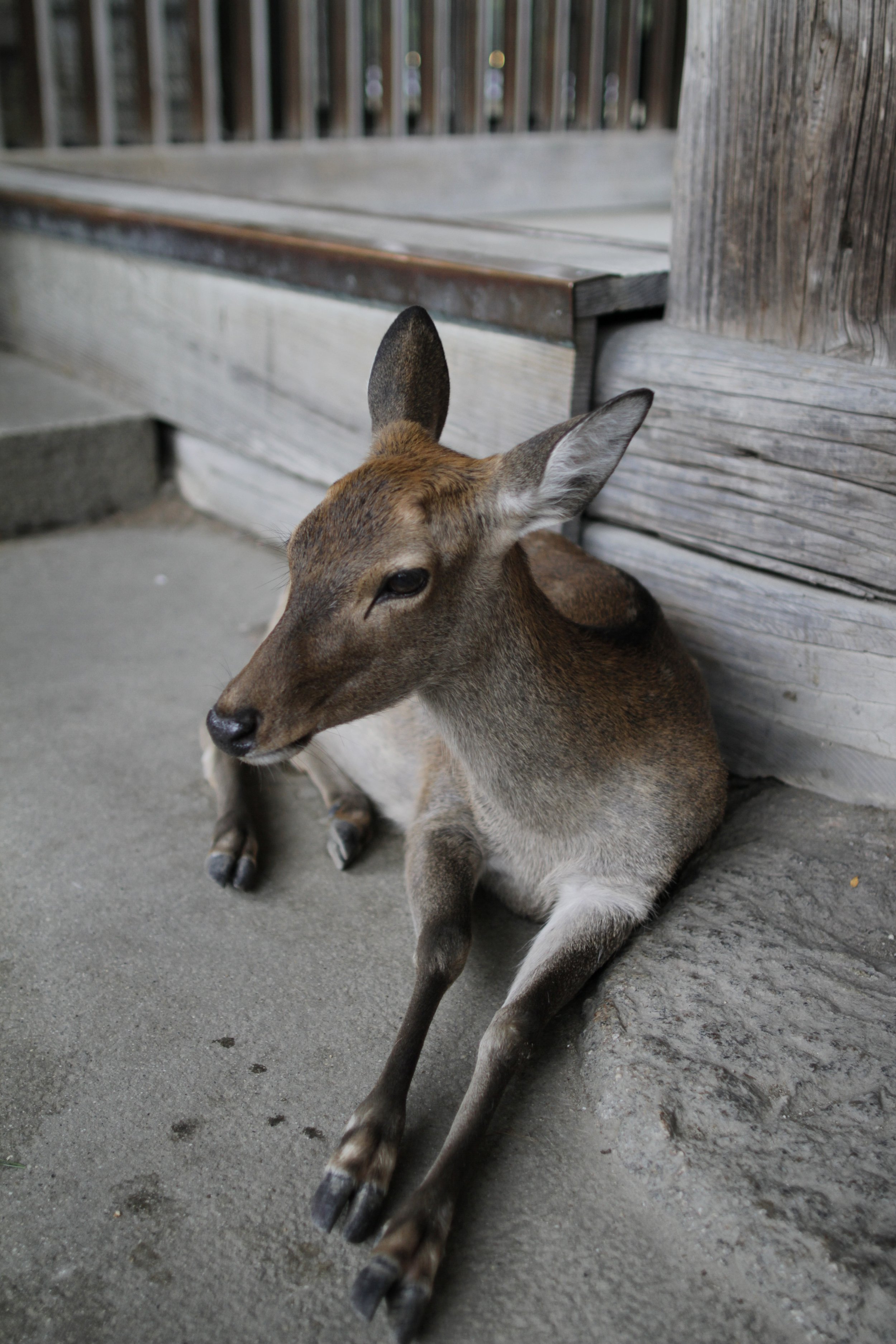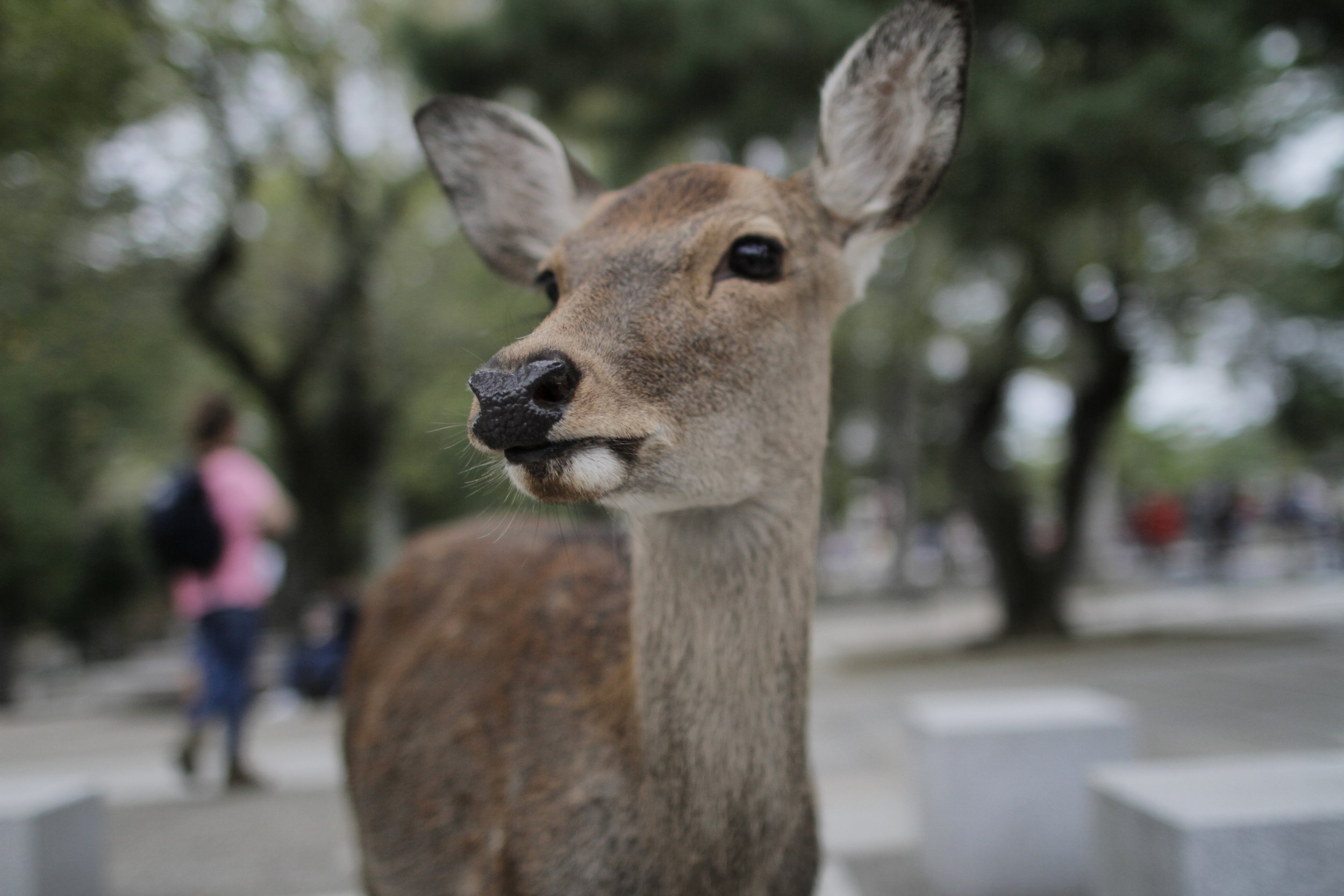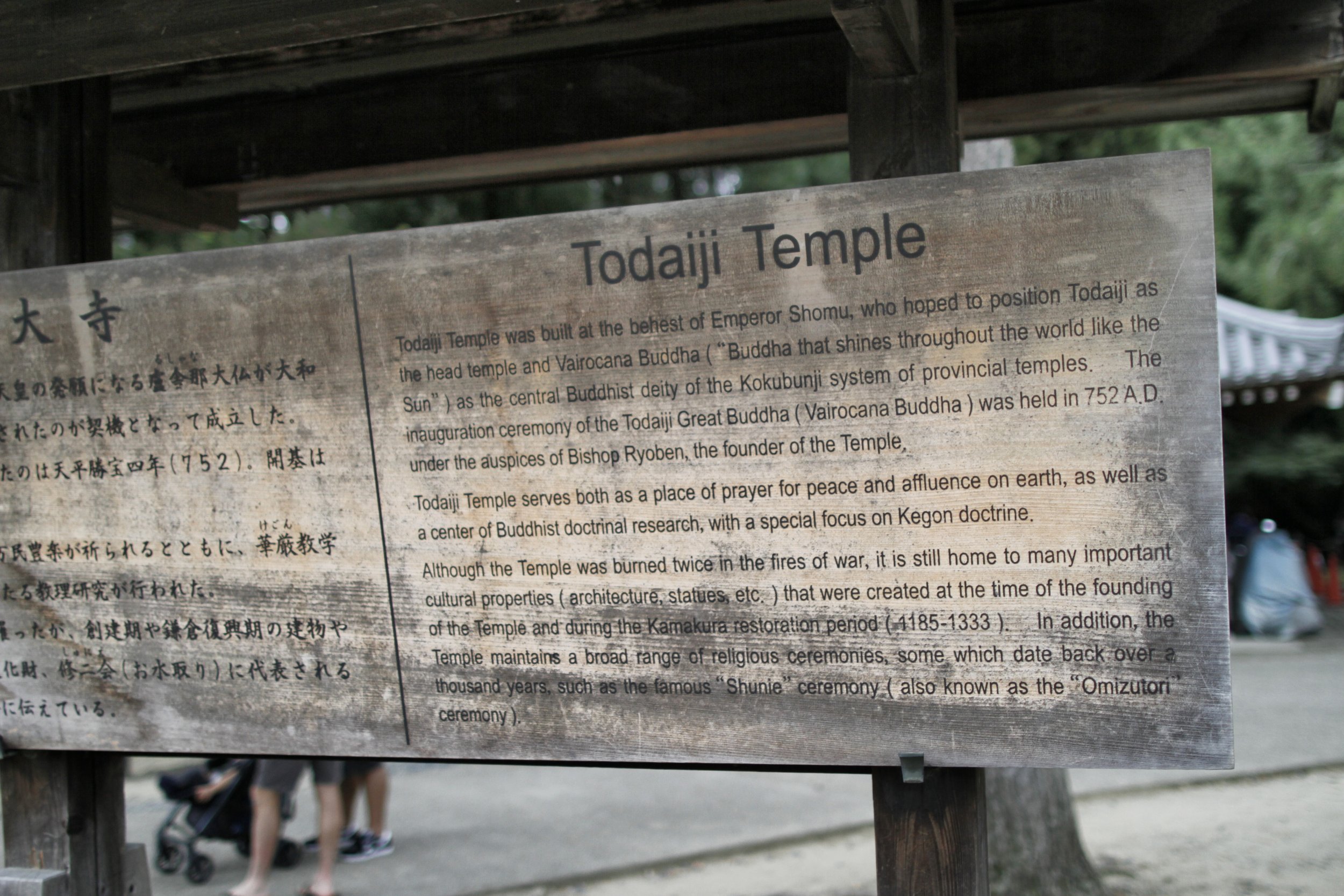Nara, Japan
Admire the Wild & Curious Deer of Nara Park
Japan, a country known for so many interesting and dynamic qualities, it’s hard not to have a reason to visit. Sumo, sushi and samurai. Mochi, Mount Fuji and miso soup. Takoyaki, unagi and kaiseki. The list goes on. Geographically, Japan is an island country in East Asia, situated in the Northwest Pacific Ocean, and is part of the Ring of Fire, a horseshoe-shaped belt region where volcanic eruptions and earthquakes are far too common. Still, it’s a land of monumental peace and mystery, where locals are known to live long, healthy and modest lives.
Nara was Japan’s first permanent capital city during the 8th century, once known as Heijō or Heijō-kyō. Located in the Kansai region just south of Kyoto and east of Osaka, it’s home to many of the earliest emperor palaces, large Shinto shrines and an abundance of wild deer that roam the land freely. With connections to the Silk Road, Nara has long since been at the heart of cultural exchanges with Europe, China and Korea. It’s this saturation of knowledge and ideas that give Nara a living museum feel with 1,300 years of history, art and architecture you won’t want to miss.
Traveling throughout Southeast Asia over the last decade wasn’t nearly enough to prepare me for my solo trip to Japan. Though years in the making, some Japan Rules were still lost on me and I found it a challenging country to travel, especially on my own. My first stop was Kyoto, the capital city and Largest Metropolitan in the World. From there, I traveled north into the rainy forests of Nikkō for some much needed Mountain Worship and then moved on to the Charming Temples, Gardens & Geisha of Kyoto, with visits to Explore Thousands of Torri Gates at Fushimi Inari Taisha, Wander the Emerald Green Bamboo Forests of Arashiyama and appreciate the sacred deer of Nara. In the end, Japan left me wanting more, with simply too much to take in over a few short weeks. With any luck, I’ll have another opportunity to explore its beautiful land a second time.
To reach Nara from Kyoto, I took a local train to Kyoto Station and transferred to the Kintetsu Express line (express trains cost more so make sure you pay the extra ¥500). After the switch, the ride took another 30 minutes to reach Nara.
Appreciate Tōdai-ji Temple
Because I often wander without much of a set plan, with only highlights I don’t want to miss, my time in Nara was a bit haphazard, but it’s all the same. Before arriving in Nara, I read about a fermented sushi that’s worth trying so on my way out of the train station I grabbed a bento box filled with fermented sushi wrapped in persimmon leaves, with plans to snack on later.
My first destination was the Buddhist temple complex of Tōdai-ji, also called Eastern Great Temple. Once, one of the powerful Seven Great Temples located in Nara, Tōdai-ji was originally founded in 738 CE but didn’t open until the year 752 CE. Since then, the temple has suffered through two wars and received several reconstructions, with the most notable as the Great Buddha Hall in 1709. Walking toward the main temple was particularly crowded, especially near the herds of deer but did thin out later in the afternoon. To enter, I paid ¥600 or about $4.50 USD, to view the famed Buddha.
Along the approach to Tōdai-ji Temple through the Nandaimon or Great Southern Gate, massive wooden warriors called Nio Guardians, guard the entrance to the complex against evil spirits. Constructed in 1203 AD, at an incredible 28-feet tall, one stands with its mouth open and the other, closed; they’re said to represent life and death, the beginning and end.
Tōdai-ji Temple is one of the most impressive in Japan and has played an important role in Japanese history throughout the ages. In 743, Emperor Shōmu issued a law stating people must become directly involved in establishing new Buddhist temples throughout Japan. It was believed that such devotion would persuade Buddha to protect the country from further disaster. And so it was, according to record, more than 2,600,000 people provided donations of wood, metal, cloth and rice. Citizens also helped build the Great Buddha and its Hall, with 350,000 people working on the statue itself.
Today, the Great Buddha Hall is home to the world’s largest bronze statue of the Buddha Vairocana, and the building itself remains as one of the largest wooden structures in the world. Additionally, the temple is listed as a UNESCO World Heritage Site and one of the Historic Monuments of Ancient Nara, along with seven other sites throughout Nara.
The scale of the building and the pieces inside felt overwhelming and imposing, inspiring a feeling of awe. One of the largest wooden buildings housing the largest bronze Buddha felt sacred and was incredibly impressive. Officially known as Daibutsu, the bronze Buddha is properly referred to as Rushana Buddha or Birushana/Vairochana Buddha, meaning “the light of wisdom and mercy shines all round.” At the base of Daibutsu, carvings called Rengezo Sekai rest on lotus petals which represent the World of Enlightenment, beautifully portraying the idea that not only are we infinitely connected and expansive, but so are all things, that all things are engulfed in the light of Virshana Buddha.
Standing 52 feet high and weighing an outrageous 500 tons, the Buddha statue was built over three years with eight castings and was completed in 751. The project cost Japan immensely, as the statue used most of Japan’s bronze and relied entirely on imported gold. The temple also has 48 impressive lacquered cinnabar pillars (brick-red form of mercury sulfide) reaching nearly 100 feet long and 5 feet wide, that support the tiled roof. In recent years, using x-rays and believed to be the relics of Emperor Shomu, a human tooth, pearls, mirrors, swords and jewels were discovered inside the knee of the Great Buddha.
Maps showing some of the original structures of Tōdai-ji are rare, though few exist. The original structures include two pagodas, a library, lecture hall, refectory (room used for communal meals in a religious institution) and monk’s quarters located behind the main hall. Historically, Tōdai-ji performed not only as a place of worship and Buddhist practice but also as a place of study and higher learning for Buddhist monks.
Wandering out of Tōdai-ji and around the surrounding area, I began to spot more and more deer, along with a huge torii gate at the entrance of Tamukeyama Hachimangu Shrine.
Explore the Magical Nara Park
Nara Park, or Nara Kōen (奈良公園), is a public park located in the city of Nara at the foot of Mount Wakakusa. Established in 1880, it’s one of Japan’s oldest parks and the location for many of Nara’s most important attractions including my first stop, Tōdai-ji, as well as Kasuga Taisha, Kofukuji and Nara National Museum. It’s over 1,200 acres are home to approximately 1,300 wild deer roaming freely (so watch your pockets).
As Japanese legend goes, the deity enshrined at Kasuga Taisha Shrine, Takemikazuchi, rode some 375 miles from Kashima Shrine to Nara, upon the back of a sacred white deer to protect the city. For this reason, Nara’s deer have been thought of as messengers of the gods and faithfully protected for many years. Thus, Nara’s nearly 1,000 deer have become a symbol of the city and have also been identified as a natural monument.
Upon entering Todai-ji Chumon, or Central Gate, large deer sat resting in the shade, ignoring passersby, and often blocking the walking path. Just inside the gate, carts were selling deer crackers, which I first mistook for human snacks. Note, even though Nara is known for these crackers, called shika senbei, Nara’s deer are wild and are capable of finding their own food. Typically, throughout the year deer will eat several varieties of grass which make up the majority of their diet.
Regardless, from what I could tell, the deer seemed to love these tasty treats made of wheat flour and rice bran, minus the sugar, so I purchased a package to share.
Perfectly safe for visitors to offer the animals, these crackers are a registered trademark of the Foundation for the Protection of Deer in Nara, and a portion of their profits go toward efforts in protecting the deer. Not to mention, the crackers were packaged beautifully and worth admiring.
Once the crackers were in hand, there was no escaping the deer and although Nara’s deer are fairly tame, they can be quite aggressive if they think you’ll feed them, stealing crackers right out of your hand. One feisty deer even started biting my butt, startling me more than I’d like to admit. Some deer have even learned how to bow for visitors, earning themselves a cracker.
After my alarming encounter with the deer, I found a row of vendors selling snacks like white peach ice cream and enjoyed a deliciously beautiful cone.
Wander Into Yoshikien Garden
Slightly west of Todai-ji Nandaimon (Grand South Gate) lies Yoshikien Garden, a peaceful classical Japanese garden on a quiet river which it takes its name from. On the smaller side but stunning nonetheless and free to foreigners, the garden dates back to 1919 and was previously part of the nearby Kofuku-ji Temple grounds.
With three distinct garden styles, Yoshikien provides an opportunity to experience various types of Japanese gardens within one space; the pond garden, moss garden and tea flower garden surround a traditional wooden teahouse.
Although compact, the gardens offered a respite from the rest of Nara and I can’t imagine the gorgeous blooms that take place during spring.
The mossy green seemed to cover nearly every surface and felt as if I were transported to the set of a Japanese movie. It was a lovely location to gain some peace and quiet away from the crowds and pushy deer.
Exploring further, I eventually emerged behind the temples’s main hall in a large field of grass.
The views of the backside of the temple offered a different perspective, a softer one.
And the trees dotted with burnt orange persimmons began to remind me of my hunger.
Set Your Eyes on Kōfuku-ji Temple
West of Nara Park, lies Kōfuku-ji Temple, a Buddhist temple that was once one of the formidable Seven Great Temples in the city of Nara. The temple was not only a valuable center for the Buddhist religion but also maintained influence over the imperial government. Kōfuku-ji originated as a temple established in 669 by Kagami-no-Ōkimi, the wife of Fujiwara no Kamatari (Japanese politician and aristocrat), hoping to ward off illness. With it’s original site in Yamashina (present day Kyoto), the temple moved to Fuijiwara-kyō (imperial capital of Japan for 16 years) in 672 and then finally its present location in 710.
Historically, the grounds housed a number of structures, many of which were destroyed by civil wars and fires, but the massive five story pagoda, Gojū-no-tō, remained standing high above the surrounding landscape and was tough to miss. If you have a chance, see if you can locate Chū-kondō (Central Golden Hall) and South Octagonal Hall, which house treasures of significance.
From there, I began to head toward the train station, bumping into so many more deer, along with a gentleman playing beautiful music with a number of unique instruments.
Roam the Streets of Nara
Overabundant in Japan, sika deer, also known as Northern spotted deer or Japanese deer, are a species of deer native to much of East Asia. And because these deer are such an important part of Nara, there have been many traditions developed over time around these special creatures.
Starting in 1862 with the opening of the deer park and beginning of the season, deer calling has been a way to herd the deer. This event is held several times a year at Tobihino, a hilly parkland area with temples and free-roaming deer that gather for feeding at the sound of a horn. As the horn blows, deer emerge from the forest to gather around the blower; a sight only seen in Nara.
If you’re wondering why none of the deer in Nara have antlers it’s because in an effort to protect the trees of Nara Park, along with safety reasons, an important tradition of hosting an antler-cutting ceremony began during the Edo period. Though a buck’s antlers are a valuable symbol for the deer, this tradition encourages them to live peacefully among visitors.
Another fascinating aspect of Nara and its deer is the roku-en. Located south of the stone lantern-lined path leading to Kasuga Taisha Shrine, roku-en is an enclosed area for the deer. Each April, pregnant deer of the herd, approximately 200, are placed inside the enclosure to safely give birth to their fawns.
A few months later, in mid-July, the fawns that are able to keep up with their mothers are shown in a unique event called Kojika Koukai, or Presentation of the Fawns. The public viewing of these cute little youngsters helps teach visitors, especially school-aged children, about these special animals.
Honestly, I couldn’t get enough of these guys and girls and without crackers in my hands it was much easier to get up close and personal without feeling uneasy.
The deer seemed happy and playful, running and jumping around the grassy areas of Nara and it was tough to keep up at times.
It was especially sweet to see the fawns with the mothers, learning to maneuver their long clumsy limbs and eat copious amounts of grass. I also noticed, the tiny fawns were covered in white spots, as opposed to the larger deer, who only showed faint marks.
One activity I didn’t partake in was the man-powered buggy ride around Nara. I suppose if you’re in a hurry or just plain tired, grab a ride from one of these guys.
Making my way over to a vending area serving all kinds of treats and sweets, it was nearly impossible to escape the deer. They’d pop their heads out of fences or sit down in the middle of the sidewalk. They were walking, standing and sitting in every spot imaginable, halting traffic at times, or resting in garden beds or blocking entrances to temples.
It was also fascinating how close the deer would allow you to get to them and the sheer quantity. They were in every direction and moved quickly and effortlessly, checking out each visitor for snacks.
Many were gentle enough that you could pet them as they tenderly sniffed you up and down, while others seemed a bit more skittish.
Eventually, I made it to the vending area near Grand South Gate and took a seat to indulge in my sushi.
Enjoy Nara's Persimmon Leaf Sushi
Kakinoha zushi, or persimmon leaf sushi, is one of Nara’s local specialties. These bite sized pillows of rice were topped with salted mackerel, or similar, and wrapped in a persimmon leaf. Each piece of sushi is then put into a wooden box and pressed with a heavy stone to ferment for a few days.
First, enjoying my beautifully packaged of fermented sushi, it was almost too perfect to disturb. Well worth the wait, it was incredibly tasty, but I did have to be cautious the deer didn’t snatch it up.
The 10 pieces of sushi included mackerel, salmon and shrimp, and cost a mere $13 USD, an incredible bargain.
Just then, I found myself back at the Grand South Gate near the two dancing figures of Nio. This enormous wooden temple gate with a double-tiered roof was completed in 1203, based on Daibutsuyō style, after the original gate was destroyed by a typhoon during the Heian period. Just past the gate lies Todai-ji Kagami-Ike Pond and the entrance to Tōdai-ji.
Still wildly active, the sacred deer of Nara couldn’t get enough of those crackers and knew enough to stay near vendors who sold them, swarming anyone with crackers in hand (or pocket).
Getting a bit more comfortable with the deer, I did find a few favorites that were gentle enough to let me get super close and pose for a photo.
With that, it was time to say goodbye to this magical city called Nara. One that will forever hold a special place in my heart. A short walk back to the train station had me on my way toward Kyoto.




